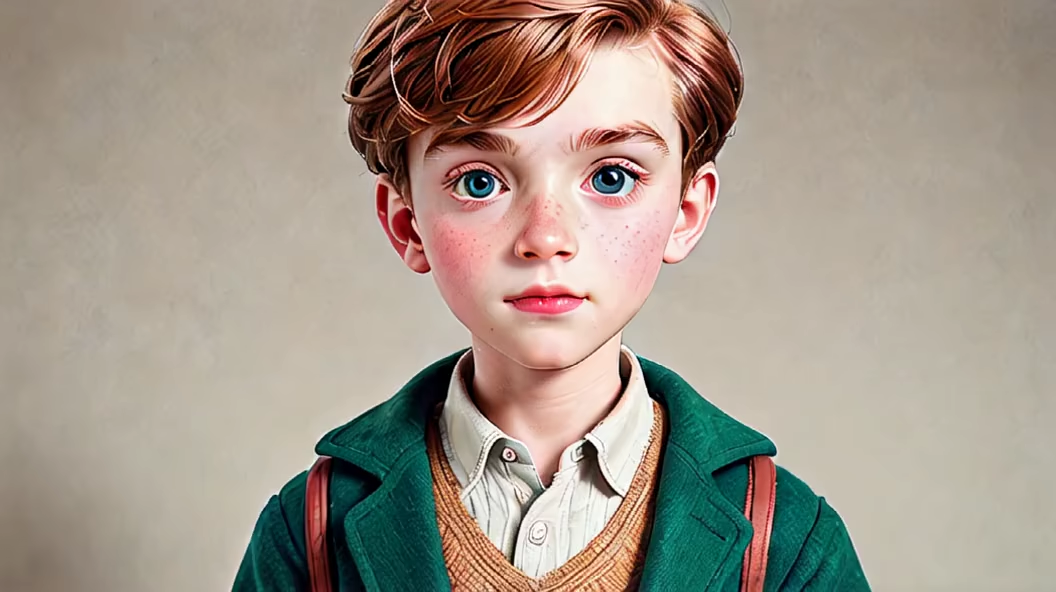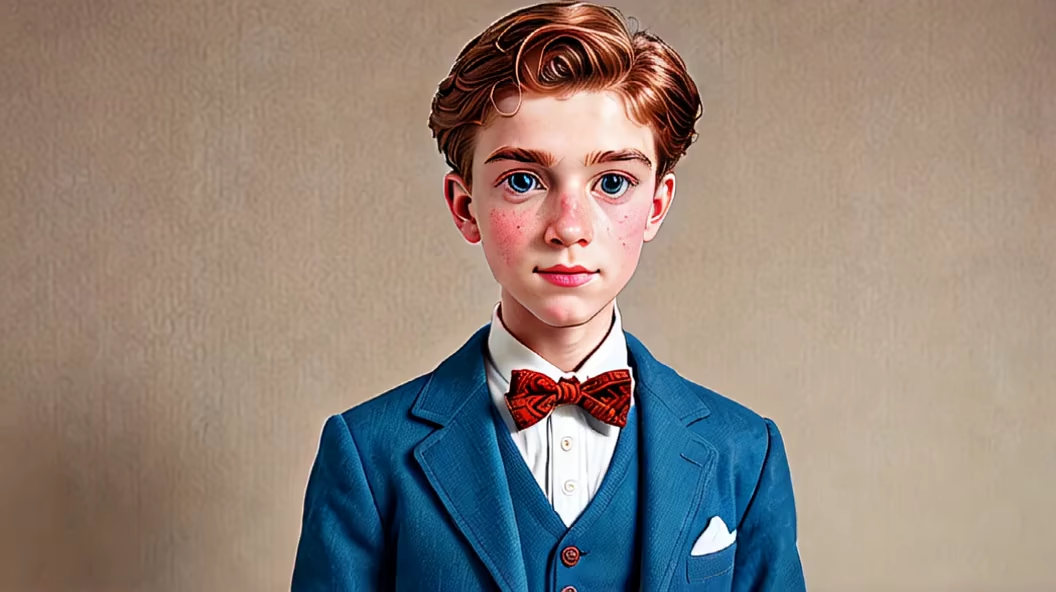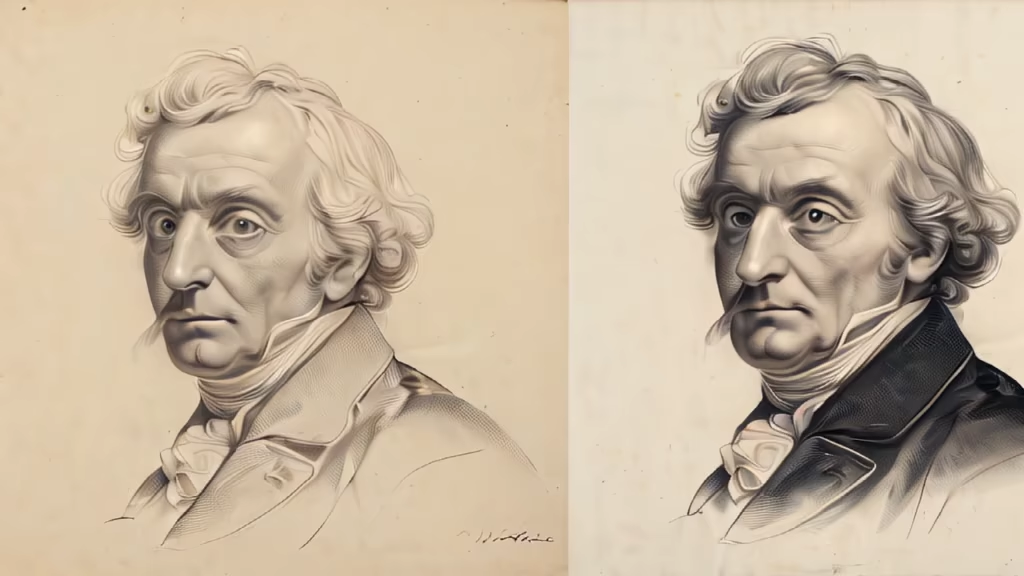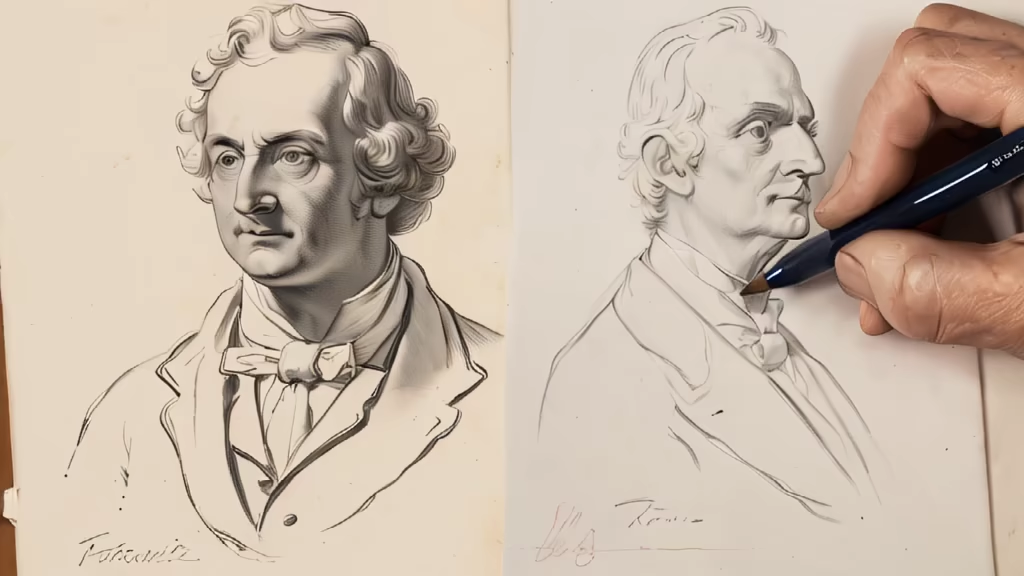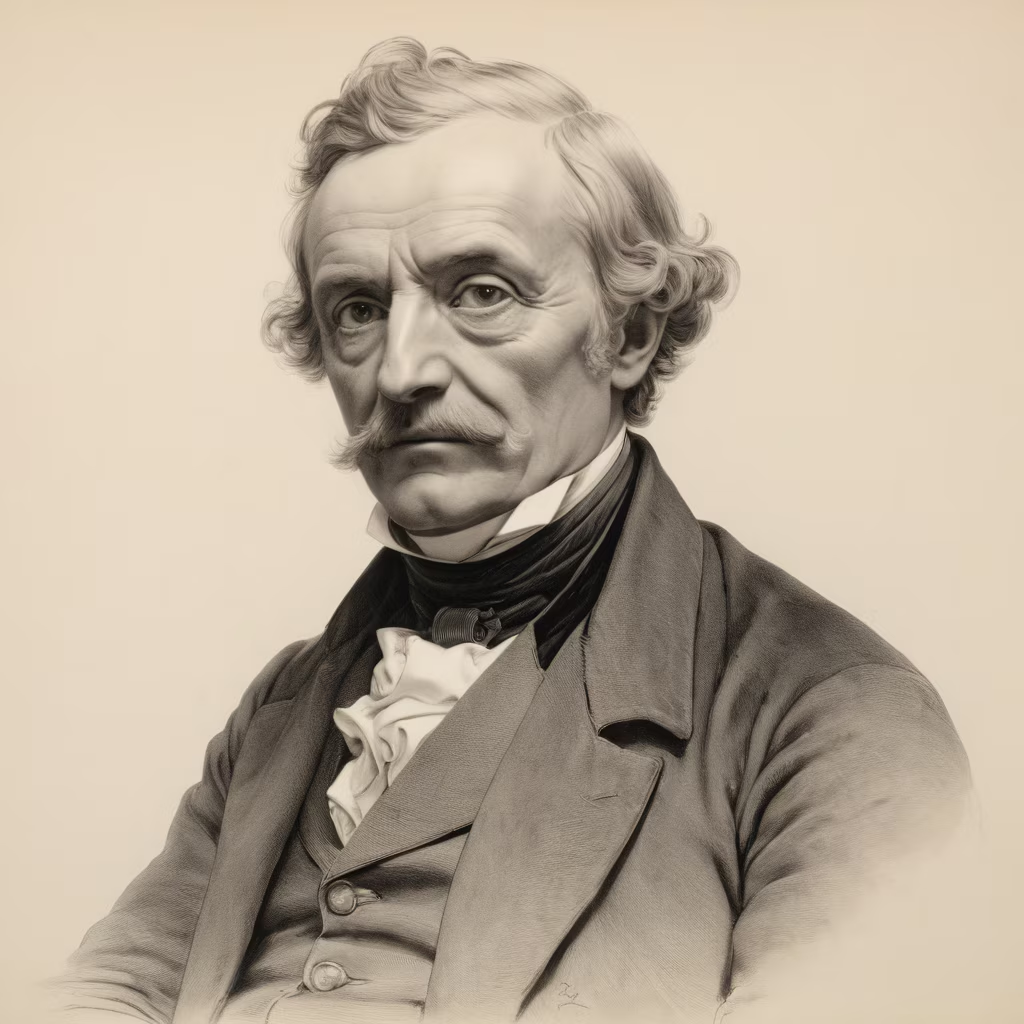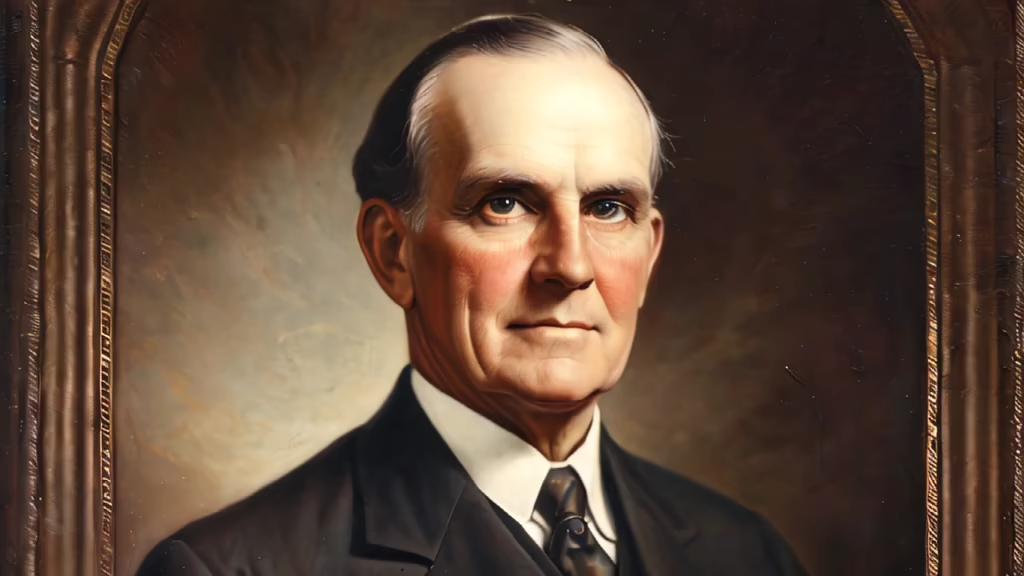Prompt: Leonard Warren-Hopkins is a mid-19th century English physician and researcher Leonard's meticulous observation of the human body showcases his scientific passion. His intellectual curiosity and pursuit of knowledge lead him to explore the boundaries of medicine, often challenging social and moral norms. References to historical figures such as Galvani, Vesalius, Descartes and Renaissance scholars add depth to Leonardo's character. His alignment with medical pioneers reflects his ambition and admiration for those who pushed the boundaries of knowledge. Leonard's internal struggles, especially regarding his standing in the medical community and his perceived lack of recognition, add a layer of complexity. His acceptance of Lord Scarborough's offer and subsequent events contribute to the evolution of his identity. Leonard's involvement in the Masonic lodge of the Order of the Lightning is an intriguing element. The Lazarus Project and Leonard's experiments with electricity on the human body introduce a fascinating plot point. The collaboration with Tesla and the quest to resurrect the dead creates a sense of suspense and anticipation. Leonard's feelings of envy and frustration within the medical community, his interactions with famous people, and the competition for recognition provide opportunities for conflict and character development. The transformation of Villa Avogadro, inherited by Lord Scarborough into a nursing home and experimental space introduces a change of setting. Interactions with staff, the involvement of Florence Nightingale and the integration of new practices create a dynamic environment. Leonard's collaboration with Lady Violet Scarborough and experimentation with laudanum open doors to the exploration of darker themes. The reference to Lady Johanna McEwan as a \"Lamia\" with healing abilities introduces a supernatural element. Exploring how those elements intersect with Leonard's scientific research can add a layer of mystery. Leonard's hope to inspire Arthur Conan Doyle and his regret at not convincing him to work together can be an intriguing subplot. This can be woven into the narrative, exploring how Leonard becomes an unintentional muse for literary works. Personal relationships and morality: Leonard's personal relationships, especially with those he experiments on, call morality into question. You can explore his internal ethical struggles, the impact on his psyche, and the reactions of those around him.
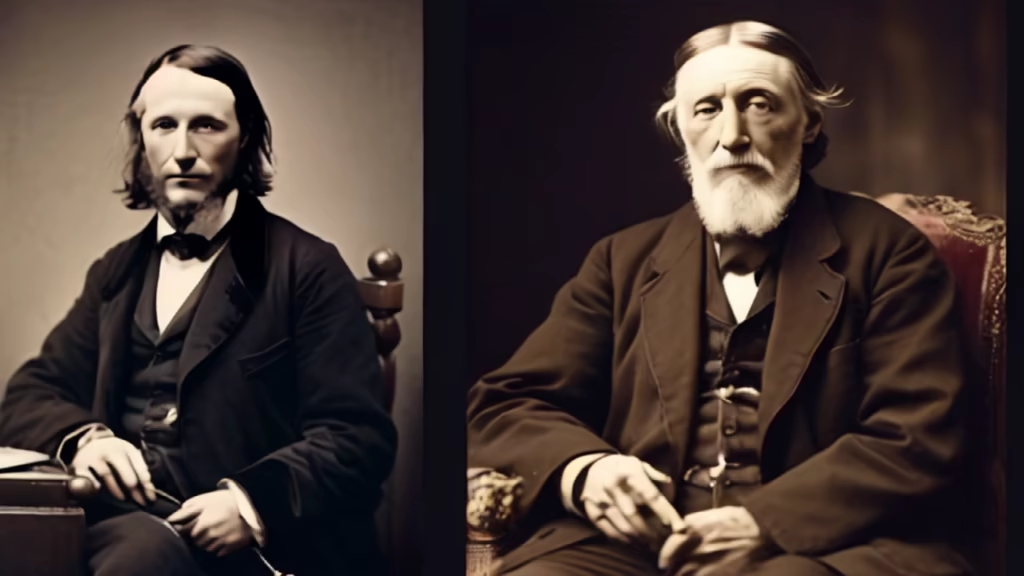
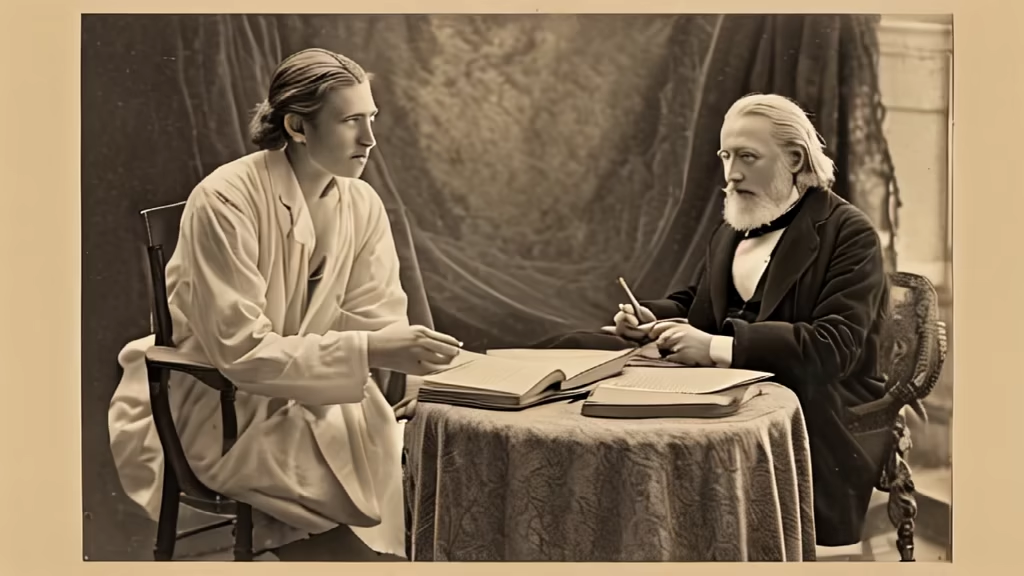
Prompt: Leonard Warren-Hopkins is a mid-19th century English he wears elegant and refined clothes, with symbols that recall being a doctor and a scientist, on his finger he wears a ring with a lightning bolt, symbol of his Masonic lodge Leonard's meticulous observation of the human body showcases his scientific passion. His intellectual curiosity and pursuit of knowledge lead him to explore the boundaries of medicine, often challenging social and moral norms. References to historical figures such as Galvani, Vesalius, Descartes and Renaissance scholars add depth to Leonardo's character. His alignment with medical pioneers reflects his ambition and admiration for those who pushed the boundaries of knowledge. Leonard's internal struggles, especially regarding his standing in the medical community and his perceived lack of recognition, add a layer of complexity. His acceptance of Lord Scarborough's offer and subsequent events contribute to the evolution of his identity. Leonard's involvement in the Masonic lodge of the Order of the Lightning is an intriguing element. The Lazarus Project and Leonard's experiments with electricity on the human body introduce a fascinating plot point. The collaboration with Tesla and the quest to resurrect the dead creates a sense of suspense and anticipation. Leonard's feelings of envy and frustration within the medical community, his interactions with famous people, and the competition for recognition provide opportunities for conflict and character development. The transformation of Villa Avogadro, inherited by Lord Scarborough into a nursing home and experimental space introduces a change of setting. Interactions with staff, the involvement of Florence Nightingale and the integration of new practices create a dynamic environment. Leonard's collaboration with Lady Violet Scarborough and experimentation with laudanum open doors to the exploration of darker themes. The reference to Lady Johanna McEwan as a \"Lamia\" with healing abilities introduces a supernatural element. Exploring how those elements intersect with Leonard's scientific research can add a layer of mystery. Leonard's hope to inspire Arthur Conan Doyle and his regret at not convincing him to work together can be an intriguing subplot. This can be woven into the narrative, exploring how Leonard becomes an unintentional muse for literary works. Leonard's personal relationships, especially with those he experiments on, call morality into question. You can explore his internal ethical struggles, the impact on his psyche, and the reactions of those around him.
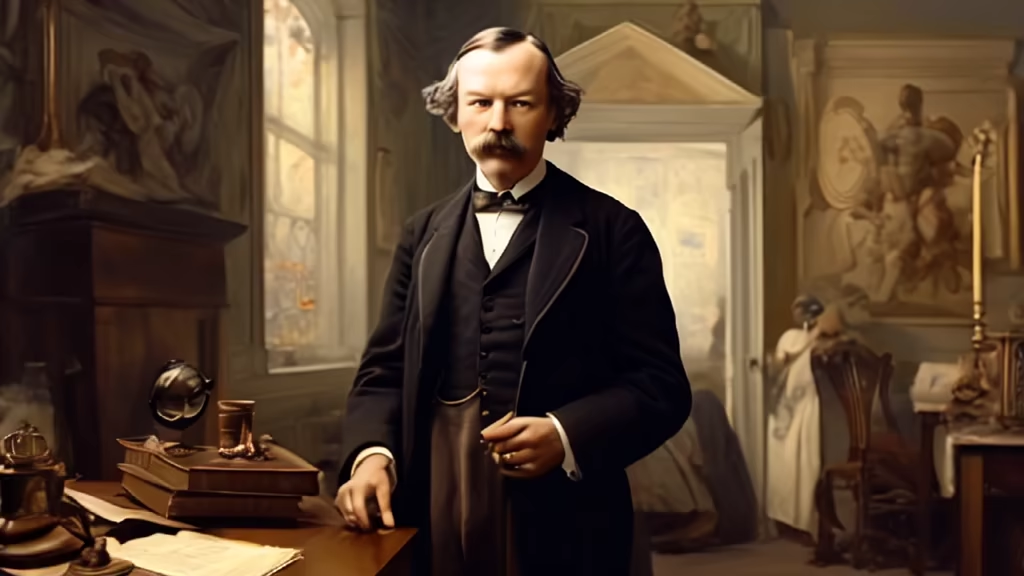
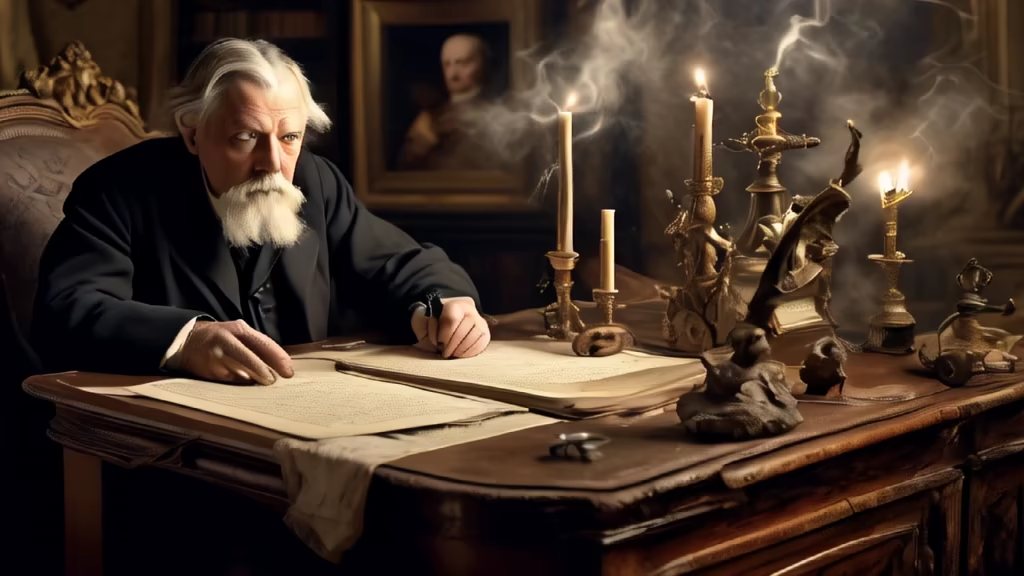
Prompt: Leonard Warren-Hopkins is a mid-19th century English he wears elegant and refined clothes, with symbols that recall being a doctor and a scientist, on his finger he wears a ring with a lightning bolt, symbol of his Masonic lodge Leonard's meticulous observation of the human body showcases his scientific passion. His intellectual curiosity and pursuit of knowledge lead him to explore the boundaries of medicine, often challenging social and moral norms. References to historical figures such as Galvani, Vesalius, Descartes and Renaissance scholars add depth to Leonardo's character. His alignment with medical pioneers reflects his ambition and admiration for those who pushed the boundaries of knowledge. Leonard's internal struggles, especially regarding his standing in the medical community and his perceived lack of recognition, add a layer of complexity. His acceptance of Lord Scarborough's offer and subsequent events contribute to the evolution of his identity. Leonard's involvement in the Masonic lodge of the Order of the Lightning is an intriguing element. The Lazarus Project and Leonard's experiments with electricity on the human body introduce a fascinating plot point. The collaboration with Tesla and the quest to resurrect the dead creates a sense of suspense and anticipation. Leonard's feelings of envy and frustration within the medical community, his interactions with famous people, and the competition for recognition provide opportunities for conflict and character development. The transformation of Villa Avogadro, inherited by Lord Scarborough into a nursing home and experimental space introduces a change of setting. Interactions with staff, the involvement of Florence Nightingale and the integration of new practices create a dynamic environment. Leonard's collaboration with Lady Violet Scarborough and experimentation with laudanum open doors to the exploration of darker themes. The reference to Lady Johanna McEwan as a \"Lamia\" with healing abilities introduces a supernatural element. Exploring how those elements intersect with Leonard's scientific research can add a layer of mystery. Leonard's hope to inspire Arthur Conan Doyle and his regret at not convincing him to work together can be an intriguing subplot. This can be woven into the narrative, exploring how Leonard becomes an unintentional muse for literary works. Leonard's personal relationships, especially with those he experiments on, call morality into question. You can explore his internal ethical struggles, the impact on his psyche, and the reactions of those around him.




Prompt: Leonard Warren-Hopkins is a mid-19th century English physician and researcher he wears elegant and refined clothes, typical of the late 1800s English with the influence of Italian fashion, with symbols that recall being a doctor and a scientist, on his finger he wears a ring with a lightning bolt, symbol of his Masonic lodge Leonard's meticulous observation of the human body showcases his scientific passion. His intellectual curiosity and pursuit of knowledge lead him to explore the boundaries of medicine, often challenging social and moral norms. References to historical figures such as Galvani, Vesalius, Descartes and Renaissance scholars add depth to Leonardo's character. His alignment with medical pioneers reflects his ambition and admiration for those who pushed the boundaries of knowledge. Leonard's internal struggles, especially regarding his standing in the medical community and his perceived lack of recognition, add a layer of complexity. His acceptance of Lord Scarborough's offer and subsequent events contribute to the evolution of his identity. Leonard's involvement in the Masonic lodge of the Order of the Lightning is an intriguing element. The Lazarus Project and Leonard's experiments with electricity on the human body introduce a fascinating plot point. The collaboration with Tesla and the quest to resurrect the dead creates a sense of suspense and anticipation. Leonard's feelings of envy and frustration within the medical community, his interactions with famous people, and the competition for recognition provide opportunities for conflict and character development. The transformation of Villa Avogadro, inherited by Lord Scarborough into a nursing home and experimental space introduces a change of setting. Interactions with staff, the involvement of Florence Nightingale and the integration of new practices create a dynamic environment. Leonard's collaboration with Lady Violet Scarborough and experimentation with laudanum open doors to the exploration of darker themes. The reference to Lady Johanna McEwan as a \"Lamia\" with healing abilities introduces a supernatural element. Exploring how those elements intersect with Leonard's scientific research can add a layer of mystery. Leonard's hope to inspire Arthur Conan Doyle and his regret at not convincing him to work together can be an intriguing subplot. This can be woven into the narrative, exploring how Leonard becomes an unintentional muse for literary works. Personal relationships and morality: Leonard's personal relationships, especially with those he experiments on, call morality into question. You can explore his internal ethical struggles, the impact on his psyche, and the reactions of those around him.
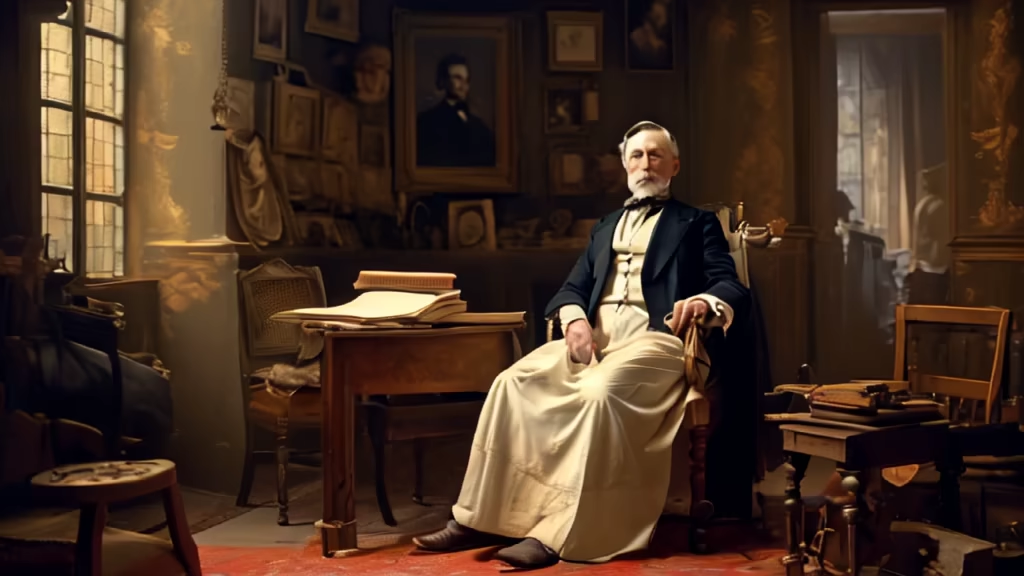
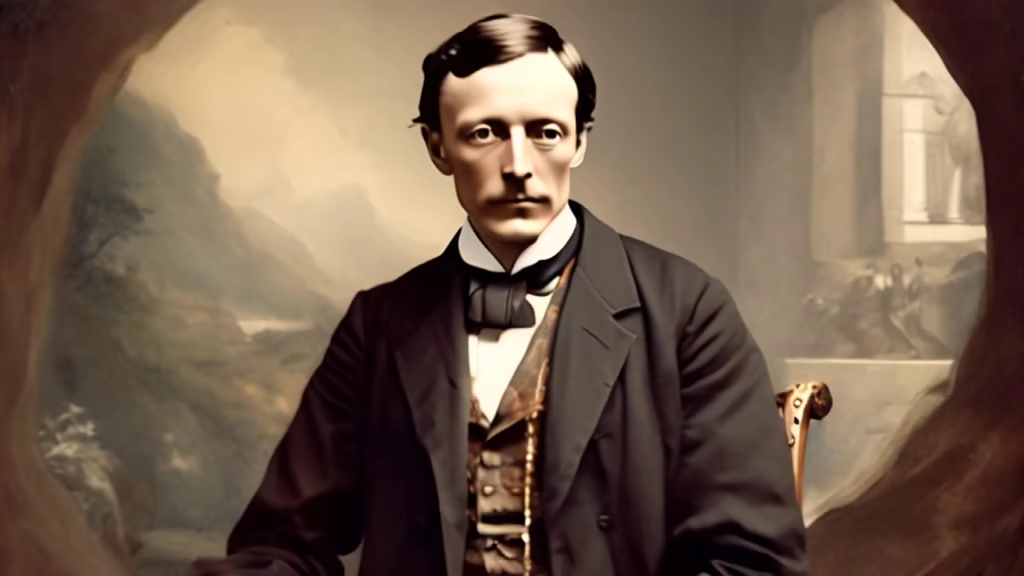
Prompt: **Leonard Warren-Hopkins is a mid-19th century English he wears elegant and refined clothes, with symbols that recall being a doctor and a scientist, on his finger he wears a ring with a lightning bolt, symbol of his Masonic lodge Leonard's meticulous observation of the human body showcases his scientific passion. His intellectual curiosity and pursuit of knowledge lead him to explore the boundaries of medicine, often challenging social and moral norms. References to historical figures such as Galvani, Vesalius, Descartes and Renaissance scholars add depth to Leonardo's character. His alignment with medical pioneers reflects his ambition and admiration for those who pushed the boundaries of knowledge. Leonard's internal struggles, especially regarding his standing in the medical community and his perceived lack of recognition, add a layer of complexity. His acceptance of Lord Scarborough's offer and subsequent events contribute to the evolution of his identity. Leonard's involvement in the Masonic lodge of the Order of the Lightning is an intriguing element. The Lazarus Project and Leonard's experiments with electricity on the human body introduce a fascinating plot point. The collaboration with Tesla and the quest to resurrect the dead creates a sense of suspense and anticipation. Leonard's feelings of envy and frustration within the medical community, his interactions with famous people, and the competition for recognition provide opportunities for conflict and character development. The transformation of Villa Avogadro, inherited by Lord Scarborough into a nursing home and experimental space introduces a change of setting. Interactions with staff, the involvement of Florence Nightingale and the integration of new practices create a dynamic environment. Leonard's collaboration with Lady Violet Scarborough and experimentation with laudanum open doors to the exploration of darker themes. The reference to Lady Johanna McEwan as a \"Lamia\" with healing abilities introduces a supernatural element. Exploring how those elements intersect with Leonard's scientific research can add a layer of mystery. Leonard's hope to inspire Arthur Conan Doyle and his regret at not convincing him to work together can be an intriguing subplot. This can be woven into the narrative, exploring how Leonard becomes an unintentional muse for literary works. Leonard's personal relationships, especially with those he experiments on, call morality into question. You can explore his internal ethical struggles, the impact on his psyche, and the reactions of those around him.


Prompt: Leonard Warren-Hopkins is a mid-19th century English physician and researcher Leonard's meticulous observation of the human body showcases his scientific passion. His intellectual curiosity and pursuit of knowledge lead him to explore the boundaries of medicine, often challenging social and moral norms. References to historical figures such as Galvani, Vesalius, Descartes and Renaissance scholars add depth to Leonardo's character. His alignment with medical pioneers reflects his ambition and admiration for those who pushed the boundaries of knowledge. Leonard's internal struggles, especially regarding his standing in the medical community and his perceived lack of recognition, add a layer of complexity. His acceptance of Lord Scarborough's offer and subsequent events contribute to the evolution of his identity. Leonard's involvement in the Masonic lodge of the Order of the Lightning is an intriguing element. The Lazarus Project and Leonard's experiments with electricity on the human body introduce a fascinating plot point. The collaboration with Tesla and the quest to resurrect the dead creates a sense of suspense and anticipation. Leonard's feelings of envy and frustration within the medical community, his interactions with famous people, and the competition for recognition provide opportunities for conflict and character development. The transformation of Villa Avogadro, inherited by Lord Scarborough into a nursing home and experimental space introduces a change of setting. Interactions with staff, the involvement of Florence Nightingale and the integration of new practices create a dynamic environment. Leonard's collaboration with Lady Violet Scarborough and experimentation with laudanum open doors to the exploration of darker themes. The reference to Lady Johanna McEwan as a \"Lamia\" with healing abilities introduces a supernatural element. Exploring how those elements intersect with Leonard's scientific research can add a layer of mystery. Leonard's hope to inspire Arthur Conan Doyle and his regret at not convincing him to work together can be an intriguing subplot. This can be woven into the narrative, exploring how Leonard becomes an unintentional muse for literary works. Personal relationships and morality: Leonard's personal relationships, especially with those he experiments on, call morality into question. You can explore his internal ethical struggles, the impact on his psyche, and the reactions of those around him.
Style: 3D Model
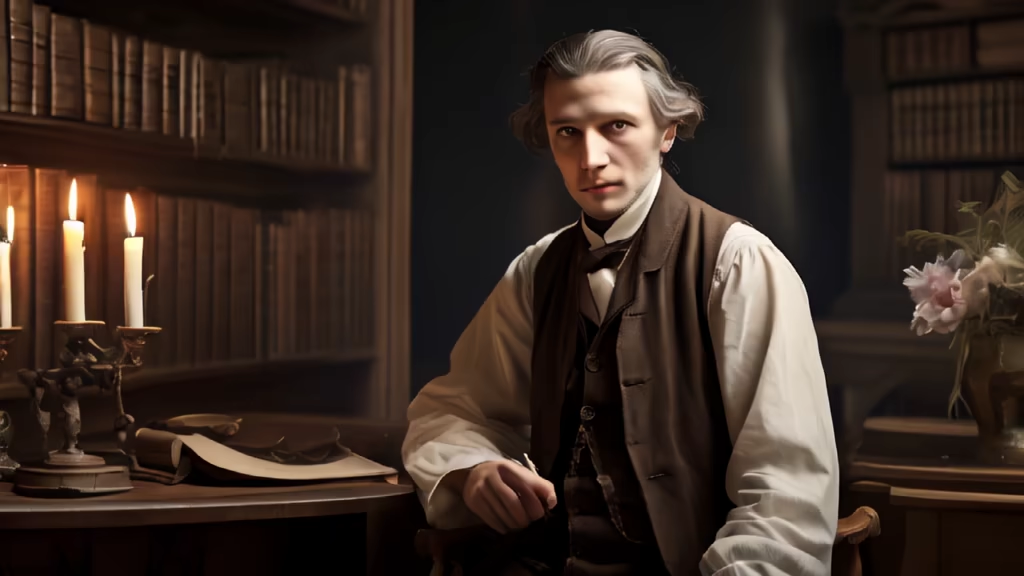
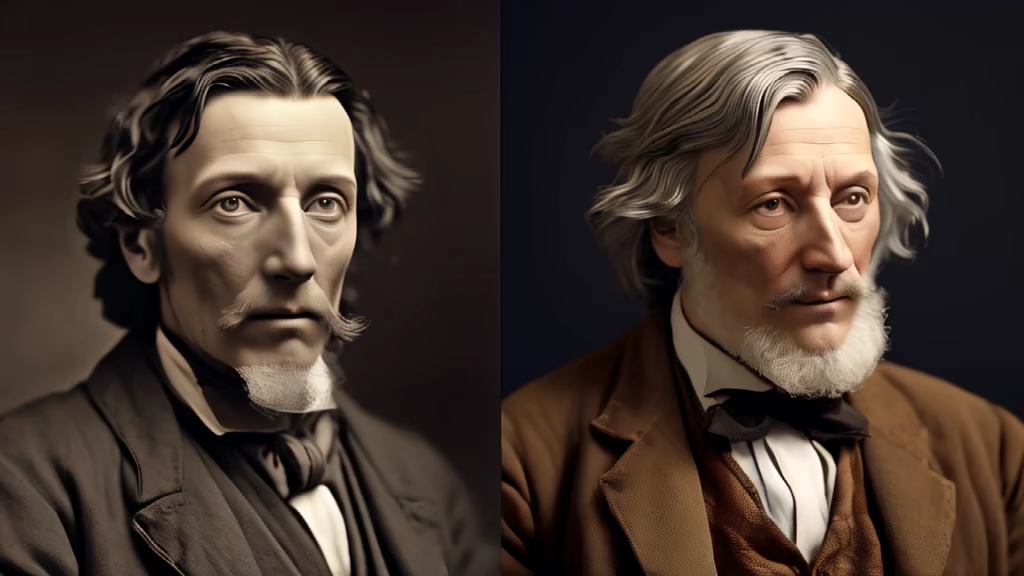
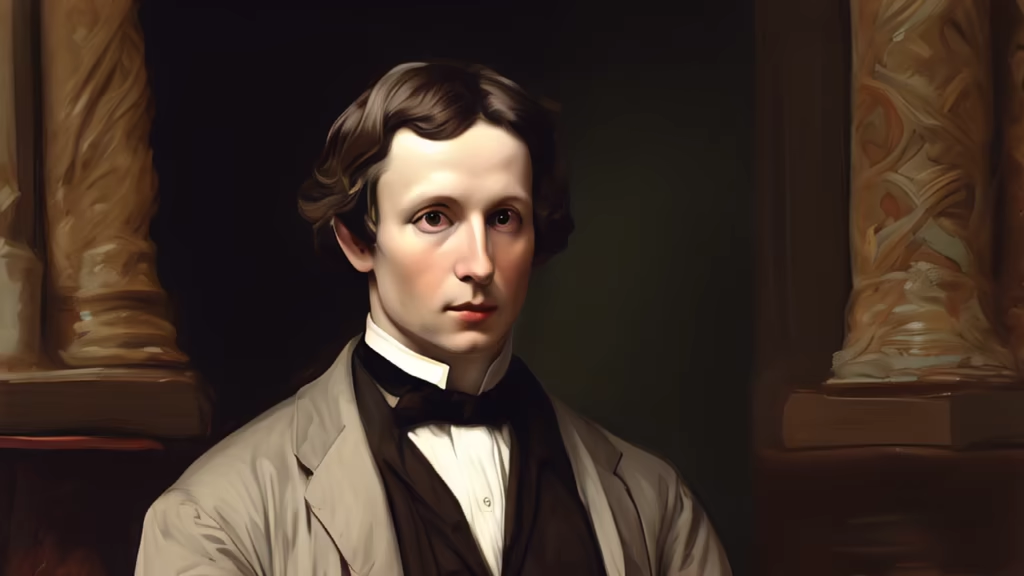
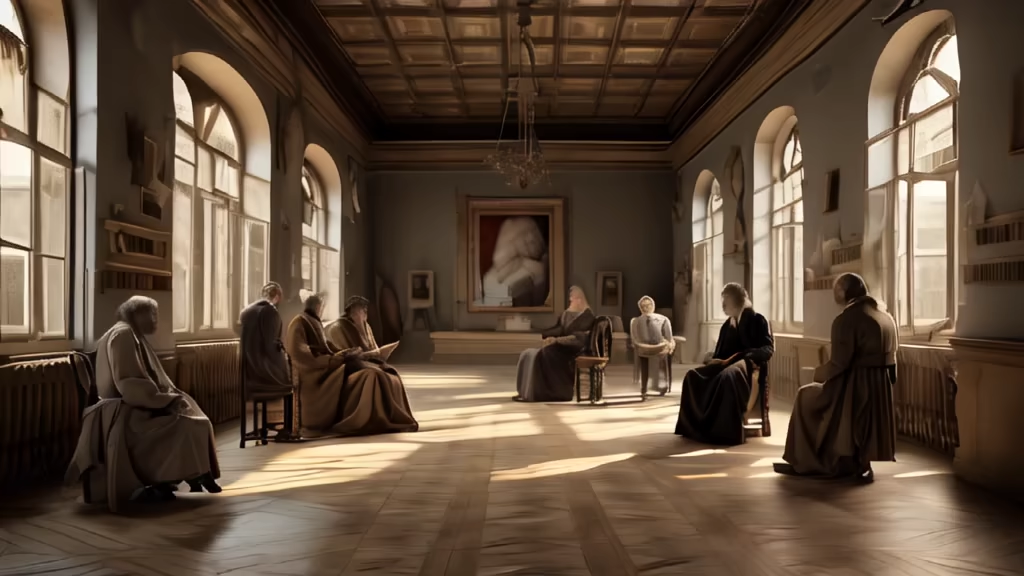
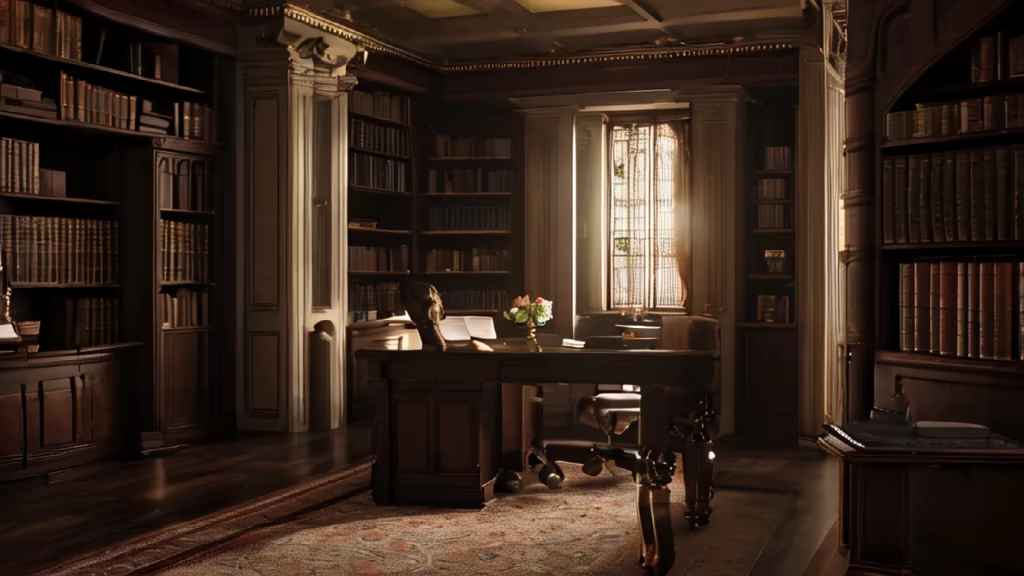
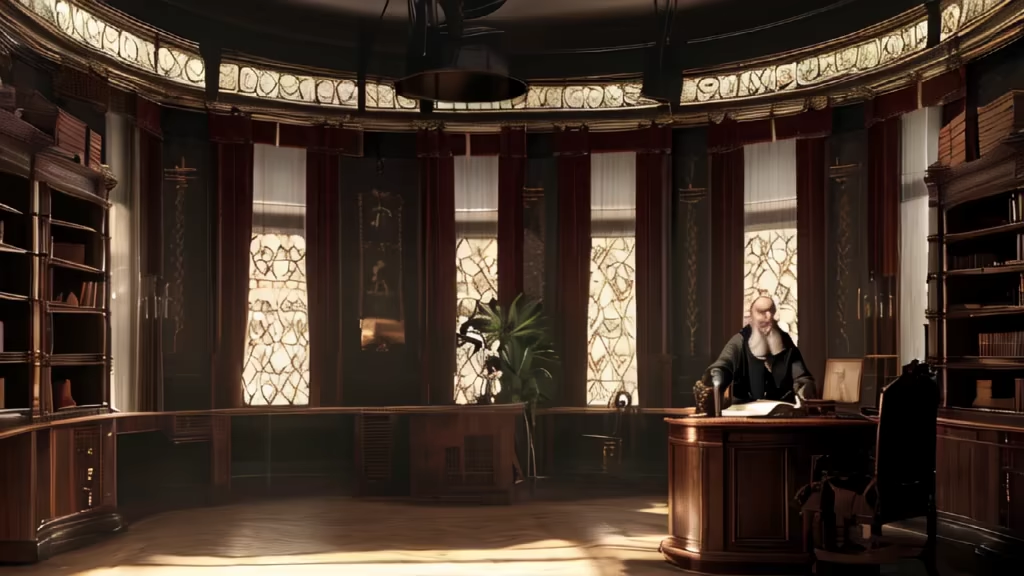
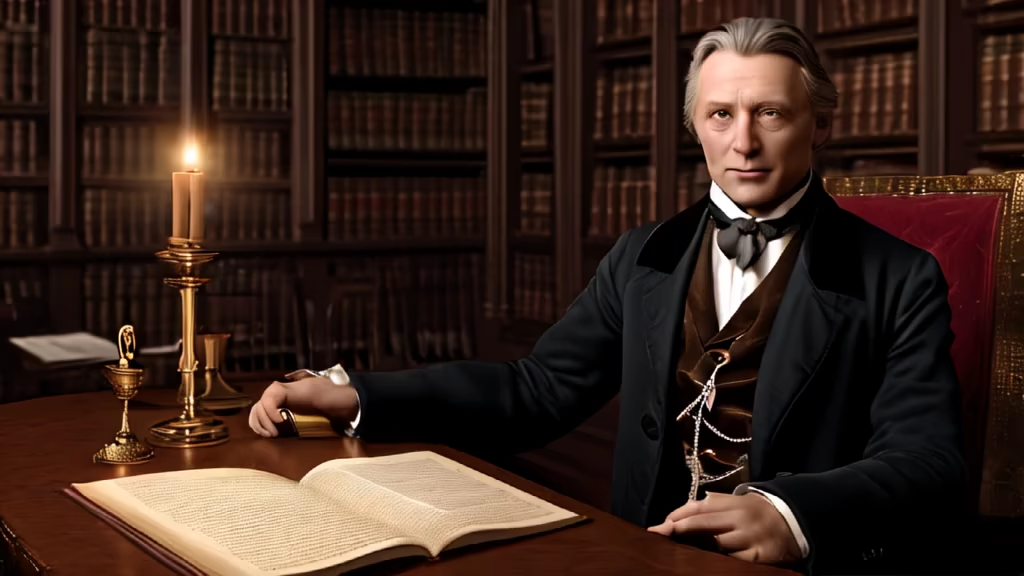
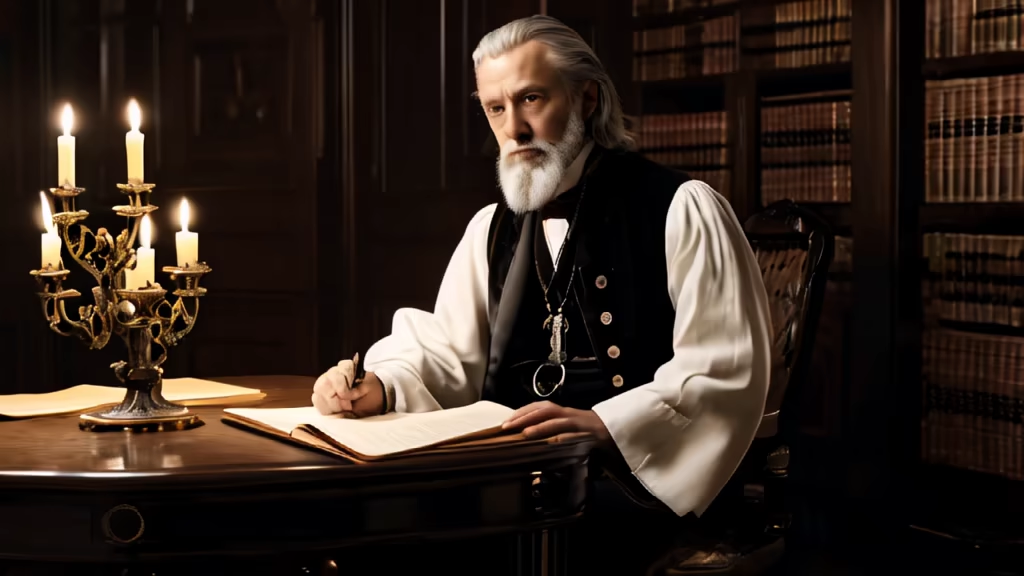
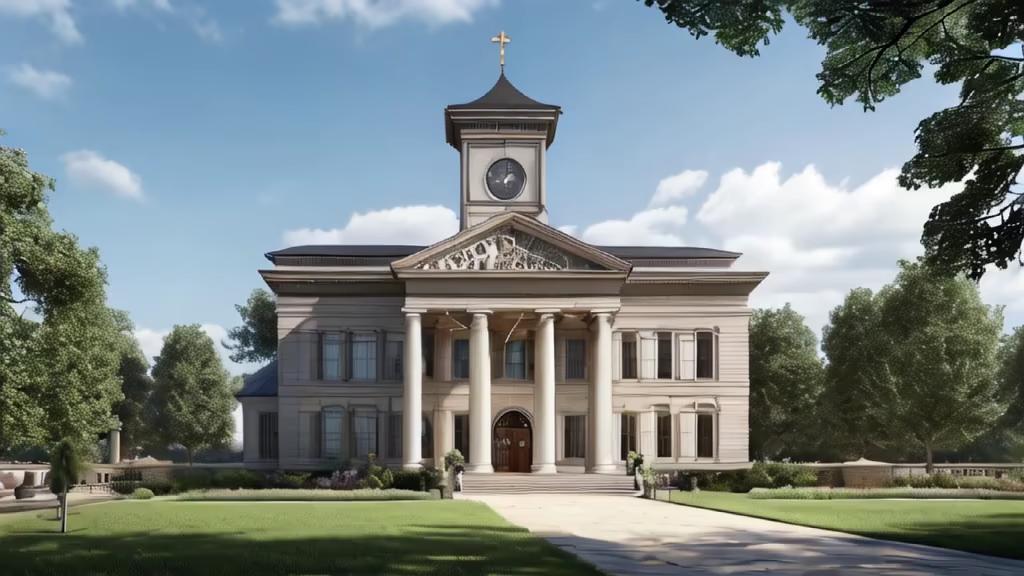
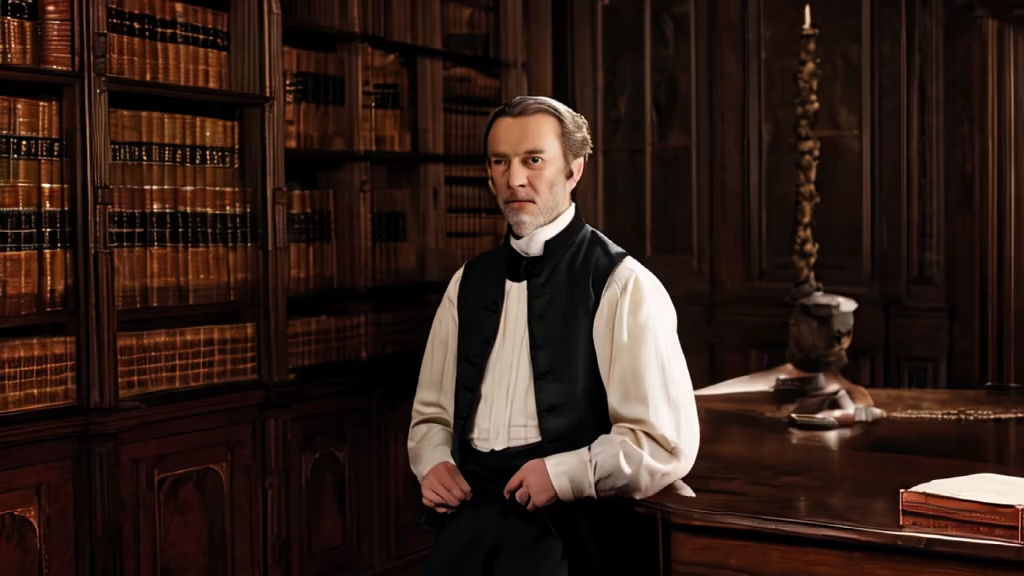
Prompt: Leonard Warren-Hopkins is a mid-19th century English physician and researcher he wears elegant and refined clothes, typical of the late 1800s English with the influence of Italian fashion, with symbols that recall being a doctor and a scientist, on his finger he wears a ring with a lightning bolt, symbol of his Masonic lodge Leonard's meticulous observation of the human body showcases his scientific passion. His intellectual curiosity and pursuit of knowledge lead him to explore the boundaries of medicine, often challenging social and moral norms. References to historical figures such as Galvani, Vesalius, Descartes and Renaissance scholars add depth to Leonardo's character. His alignment with medical pioneers reflects his ambition and admiration for those who pushed the boundaries of knowledge. Leonard's internal struggles, especially regarding his standing in the medical community and his perceived lack of recognition, add a layer of complexity. His acceptance of Lord Scarborough's offer and subsequent events contribute to the evolution of his identity. Leonard's involvement in the Masonic lodge of the Order of the Lightning is an intriguing element. The Lazarus Project and Leonard's experiments with electricity on the human body introduce a fascinating plot point. The collaboration with Tesla and the quest to resurrect the dead creates a sense of suspense and anticipation. Leonard's feelings of envy and frustration within the medical community, his interactions with famous people, and the competition for recognition provide opportunities for conflict and character development. The transformation of Villa Avogadro, inherited by Lord Scarborough into a nursing home and experimental space introduces a change of setting. Interactions with staff, the involvement of Florence Nightingale and the integration of new practices create a dynamic environment. Leonard's collaboration with Lady Violet Scarborough and experimentation with laudanum open doors to the exploration of darker themes. The reference to Lady Johanna McEwan as a \"Lamia\" with healing abilities introduces a supernatural element. Exploring how those elements intersect with Leonard's scientific research can add a layer of mystery. Leonard's hope to inspire Arthur Conan Doyle and his regret at not convincing him to work together can be an intriguing subplot. This can be woven into the narrative, exploring how Leonard becomes an unintentional muse for literary works. Personal relationships and morality: Leonard's personal relationships, especially with those he experiments on, call morality into question. You can explore his internal ethical struggles, the impact on his psyche, and the reactions of those around him.
Style: Line Art
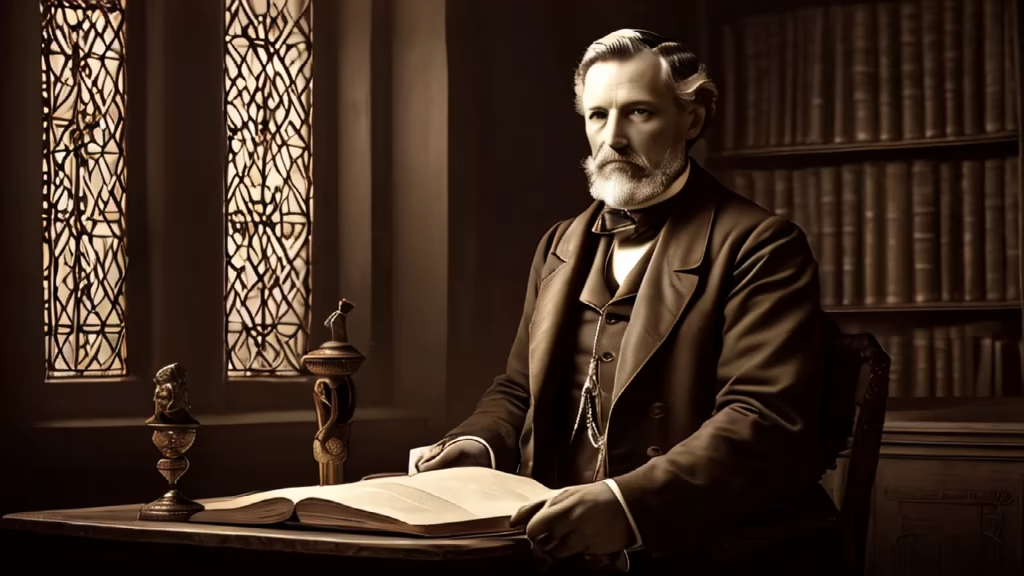

Prompt: homas Eakins (1844–1916): American Realist painter, sculptor, and photographer, notable for \"The Gross Clinic\" and \"The Agnew Clinic.\" --v 6.0


Prompt: Leonard Warren-Hopkins is a mid-19th century English physician and researcher he wears elegant and refined clothes, typical of the late 1800s English with the influence of Italian fashion, with symbols that recall being a doctor and a scientist, on his finger he wears a ring with a lightning bolt, symbol of his Masonic lodge Leonard's meticulous observation of the human body showcases his scientific passion. His intellectual curiosity and pursuit of knowledge lead him to explore the boundaries of medicine, often challenging social and moral norms. References to historical figures such as Galvani, Vesalius, Descartes and Renaissance scholars add depth to Leonardo's character. His alignment with medical pioneers reflects his ambition and admiration for those who pushed the boundaries of knowledge. Leonard's internal struggles, especially regarding his standing in the medical community and his perceived lack of recognition, add a layer of complexity. His acceptance of Lord Scarborough's offer and subsequent events contribute to the evolution of his identity. Leonard's involvement in the Masonic lodge of the Order of the Lightning is an intriguing element. The Lazarus Project and Leonard's experiments with electricity on the human body introduce a fascinating plot point. The collaboration with Tesla and the quest to resurrect the dead creates a sense of suspense and anticipation. Leonard's feelings of envy and frustration within the medical community, his interactions with famous people, and the competition for recognition provide opportunities for conflict and character development. The transformation of Villa Avogadro, inherited by Lord Scarborough into a nursing home and experimental space introduces a change of setting. Interactions with staff, the involvement of Florence Nightingale and the integration of new practices create a dynamic environment. Leonard's collaboration with Lady Violet Scarborough and experimentation with laudanum open doors to the exploration of darker themes. The reference to Lady Johanna McEwan as a \"Lamia\" with healing abilities introduces a supernatural element. Exploring how those elements intersect with Leonard's scientific research can add a layer of mystery. Leonard's hope to inspire Arthur Conan Doyle and his regret at not convincing him to work together can be an intriguing subplot. This can be woven into the narrative, exploring how Leonard becomes an unintentional muse for literary works. Personal relationships and morality: Leonard's personal relationships, especially with those he experiments on, call morality into question. You can explore his internal ethical struggles, the impact on his psyche, and the reactions of those around him.
Style: Photographic

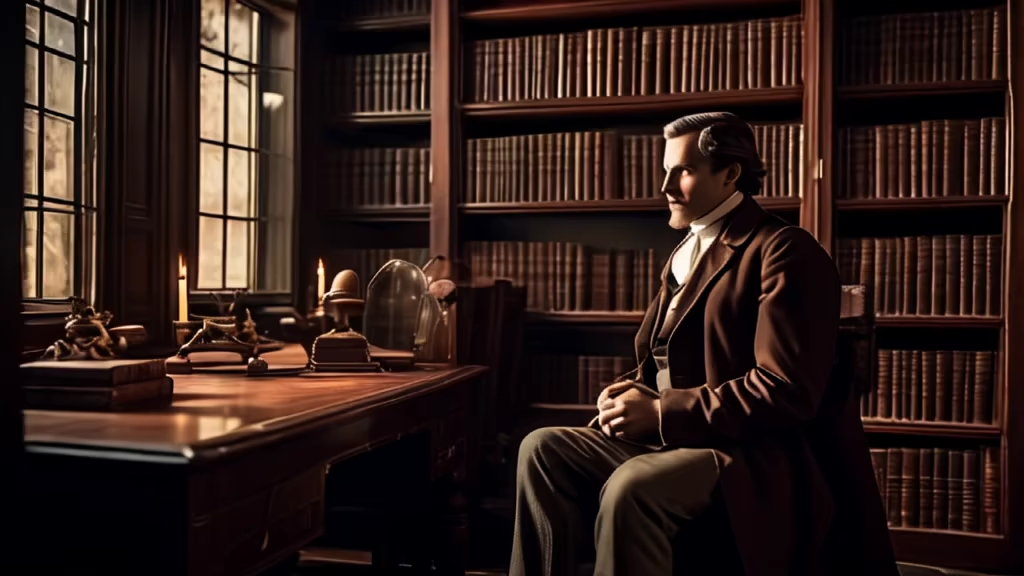
Prompt: Leonard Warren-Hopkins is a mid-19th century English physician and researcher he wears elegant and refined clothes, typical of the late 1800s English with the influence of Italian fashion, with symbols that recall being a doctor and a scientist, on his finger he wears a ring with a lightning bolt, symbol of his Masonic lodge Leonard's meticulous observation of the human body showcases his scientific passion. His intellectual curiosity and pursuit of knowledge lead him to explore the boundaries of medicine, often challenging social and moral norms. References to historical figures such as Galvani, Vesalius, Descartes and Renaissance scholars add depth to Leonardo's character. His alignment with medical pioneers reflects his ambition and admiration for those who pushed the boundaries of knowledge. Leonard's internal struggles, especially regarding his standing in the medical community and his perceived lack of recognition, add a layer of complexity. His acceptance of Lord Scarborough's offer and subsequent events contribute to the evolution of his identity. Leonard's involvement in the Masonic lodge of the Order of the Lightning is an intriguing element. The Lazarus Project and Leonard's experiments with electricity on the human body introduce a fascinating plot point. The collaboration with Tesla and the quest to resurrect the dead creates a sense of suspense and anticipation. Leonard's feelings of envy and frustration within the medical community, his interactions with famous people, and the competition for recognition provide opportunities for conflict and character development. The transformation of Villa Avogadro, inherited by Lord Scarborough into a nursing home and experimental space introduces a change of setting. Interactions with staff, the involvement of Florence Nightingale and the integration of new practices create a dynamic environment. Leonard's collaboration with Lady Violet Scarborough and experimentation with laudanum open doors to the exploration of darker themes. The reference to Lady Johanna McEwan as a \"Lamia\" with healing abilities introduces a supernatural element. Exploring how those elements intersect with Leonard's scientific research can add a layer of mystery. Leonard's hope to inspire Arthur Conan Doyle and his regret at not convincing him to work together can be an intriguing subplot. This can be woven into the narrative, exploring how Leonard becomes an unintentional muse for literary works. Personal relationships and morality: Leonard's personal relationships, especially with those he experiments on, call morality into question. You can explore his internal ethical struggles, the impact on his psyche, and the reactions of those around him.
Style: Photographic

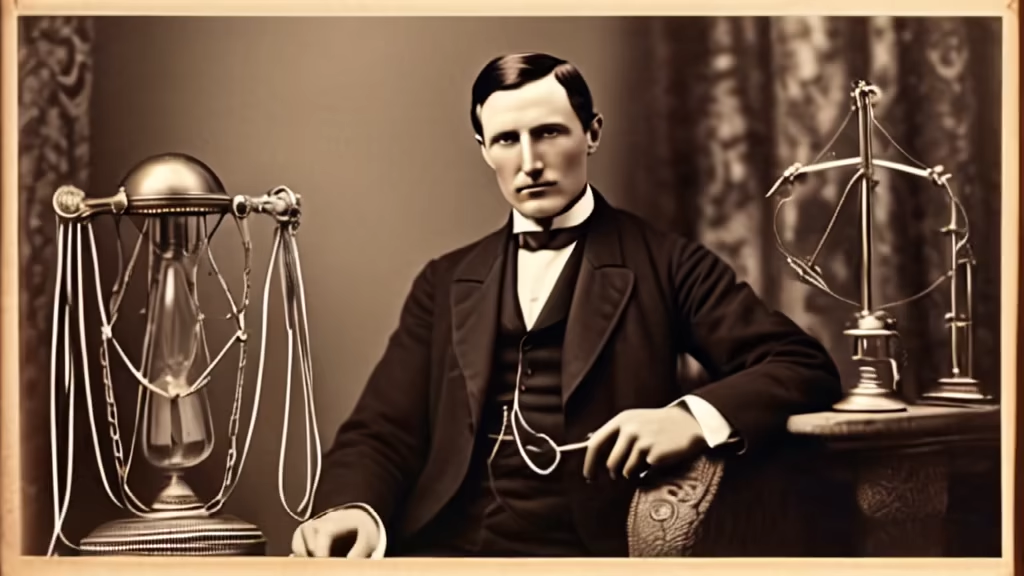
Prompt: Leonard Warren-Hopkins is a mid-19th century English physician and researcher he wears elegant and refined clothes, typical of the late 1800s English with the influence of Italian fashion, with symbols that recall being a doctor and a scientist, on his finger he wears a ring with a lightning bolt, symbol of his Masonic lodge Leonard's meticulous observation of the human body showcases his scientific passion. His intellectual curiosity and pursuit of knowledge lead him to explore the boundaries of medicine, often challenging social and moral norms. References to historical figures such as Galvani, Vesalius, Descartes and Renaissance scholars add depth to Leonardo's character. His alignment with medical pioneers reflects his ambition and admiration for those who pushed the boundaries of knowledge. Leonard's internal struggles, especially regarding his standing in the medical community and his perceived lack of recognition, add a layer of complexity. His acceptance of Lord Scarborough's offer and subsequent events contribute to the evolution of his identity. Leonard's involvement in the Masonic lodge of the Order of the Lightning is an intriguing element. The Lazarus Project and Leonard's experiments with electricity on the human body introduce a fascinating plot point. The collaboration with Tesla and the quest to resurrect the dead creates a sense of suspense and anticipation. Leonard's feelings of envy and frustration within the medical community, his interactions with famous people, and the competition for recognition provide opportunities for conflict and character development. The transformation of Villa Avogadro, inherited by Lord Scarborough into a nursing home and experimental space introduces a change of setting. Interactions with staff, the involvement of Florence Nightingale and the integration of new practices create a dynamic environment. Leonard's collaboration with Lady Violet Scarborough and experimentation with laudanum open doors to the exploration of darker themes. The reference to Lady Johanna McEwan as a \"Lamia\" with healing abilities introduces a supernatural element. Exploring how those elements intersect with Leonard's scientific research can add a layer of mystery. Leonard's hope to inspire Arthur Conan Doyle and his regret at not convincing him to work together can be an intriguing subplot. This can be woven into the narrative, exploring how Leonard becomes an unintentional muse for literary works. Personal relationships and morality: Leonard's personal relationships, especially with those he experiments on, call morality into question. You can explore his internal ethical struggles, the impact on his psyche, and the reactions of those around him.
Style: Photographic
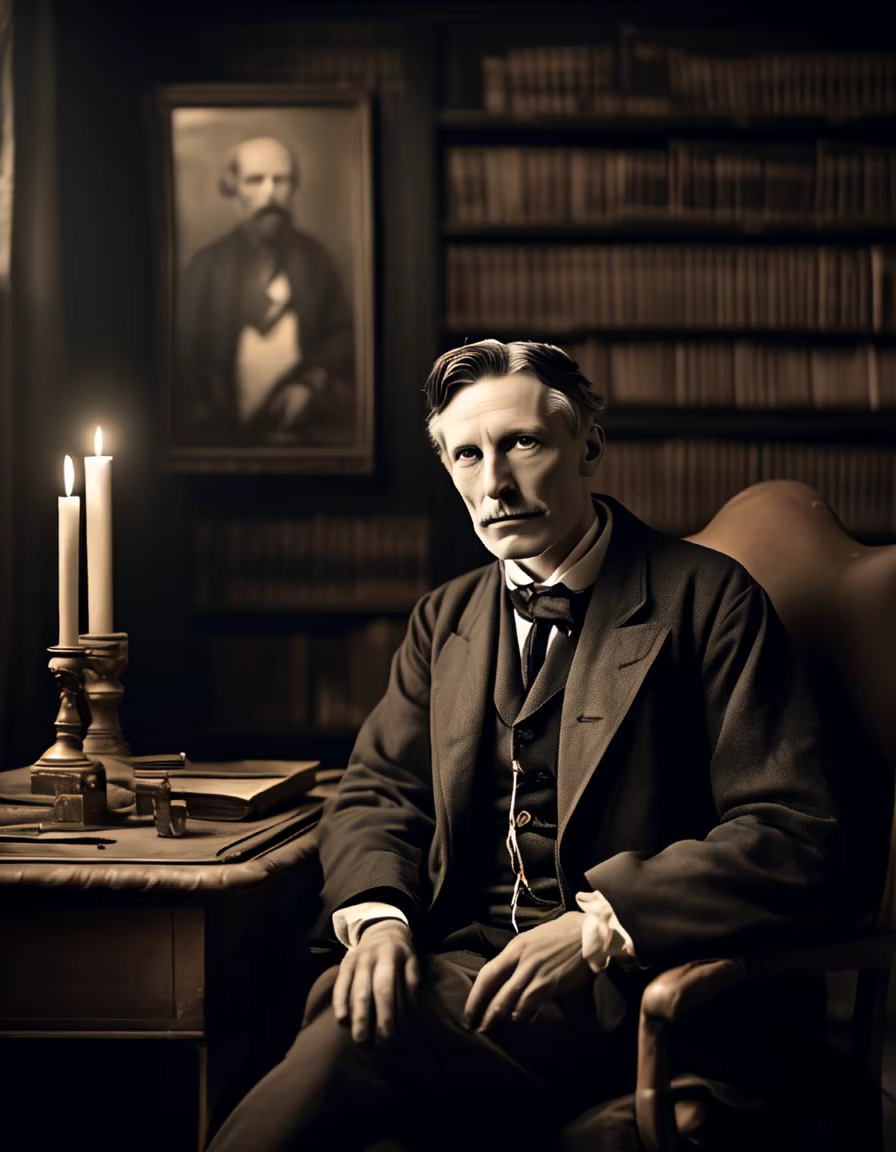
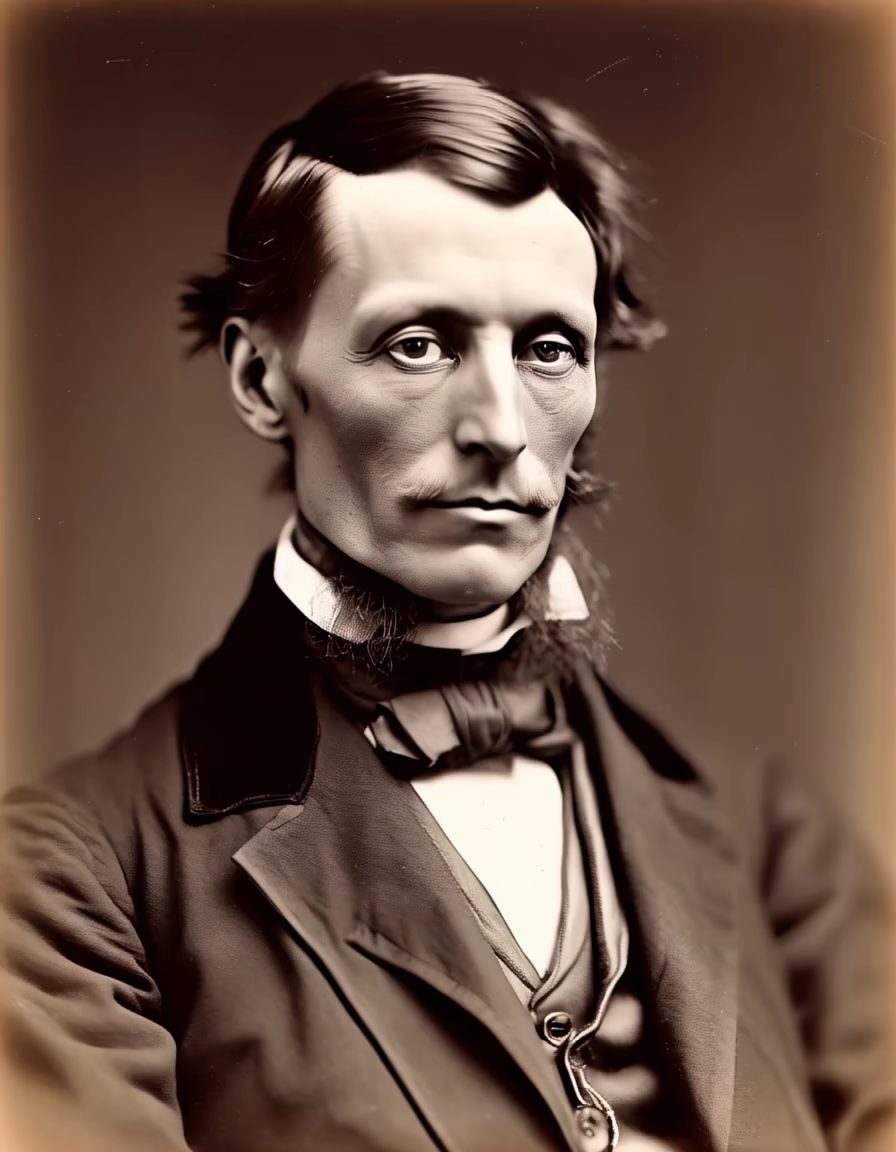
Prompt: Leonard Warren-Hopkins is a mid-19th century English physician and researcher he wears elegant and refined clothes, typical of the late 1800s English with the influence of Italian fashion, with symbols that recall being a doctor and a scientist, on his finger he wears a ring with a lightning bolt, symbol of his Masonic lodge Leonard's meticulous observation of the human body showcases his scientific passion. His intellectual curiosity and pursuit of knowledge lead him to explore the boundaries of medicine, often challenging social and moral norms. References to historical figures such as Galvani, Vesalius, Descartes and Renaissance scholars add depth to Leonardo's character. His alignment with medical pioneers reflects his ambition and admiration for those who pushed the boundaries of knowledge. Leonard's internal struggles, especially regarding his standing in the medical community and his perceived lack of recognition, add a layer of complexity. His acceptance of Lord Scarborough's offer and subsequent events contribute to the evolution of his identity. Leonard's involvement in the Masonic lodge of the Order of the Lightning is an intriguing element. The Lazarus Project and Leonard's experiments with electricity on the human body introduce a fascinating plot point. The collaboration with Tesla and the quest to resurrect the dead creates a sense of suspense and anticipation. Leonard's feelings of envy and frustration within the medical community, his interactions with famous people, and the competition for recognition provide opportunities for conflict and character development. The transformation of Villa Avogadro, inherited by Lord Scarborough into a nursing home and experimental space introduces a change of setting. Interactions with staff, the involvement of Florence Nightingale and the integration of new practices create a dynamic environment. Leonard's collaboration with Lady Violet Scarborough and experimentation with laudanum open doors to the exploration of darker themes. The reference to Lady Johanna McEwan as a \"Lamia\" with healing abilities introduces a supernatural element. Exploring how those elements intersect with Leonard's scientific research can add a layer of mystery. Leonard's hope to inspire Arthur Conan Doyle and his regret at not convincing him to work together can be an intriguing subplot. This can be woven into the narrative, exploring how Leonard becomes an unintentional muse for literary works. Personal relationships and morality: Leonard's personal relationships, especially with those he experiments on, call morality into question. You can explore his internal ethical struggles, the impact on his psyche, and the reactions of those around him.
Style: Photographic
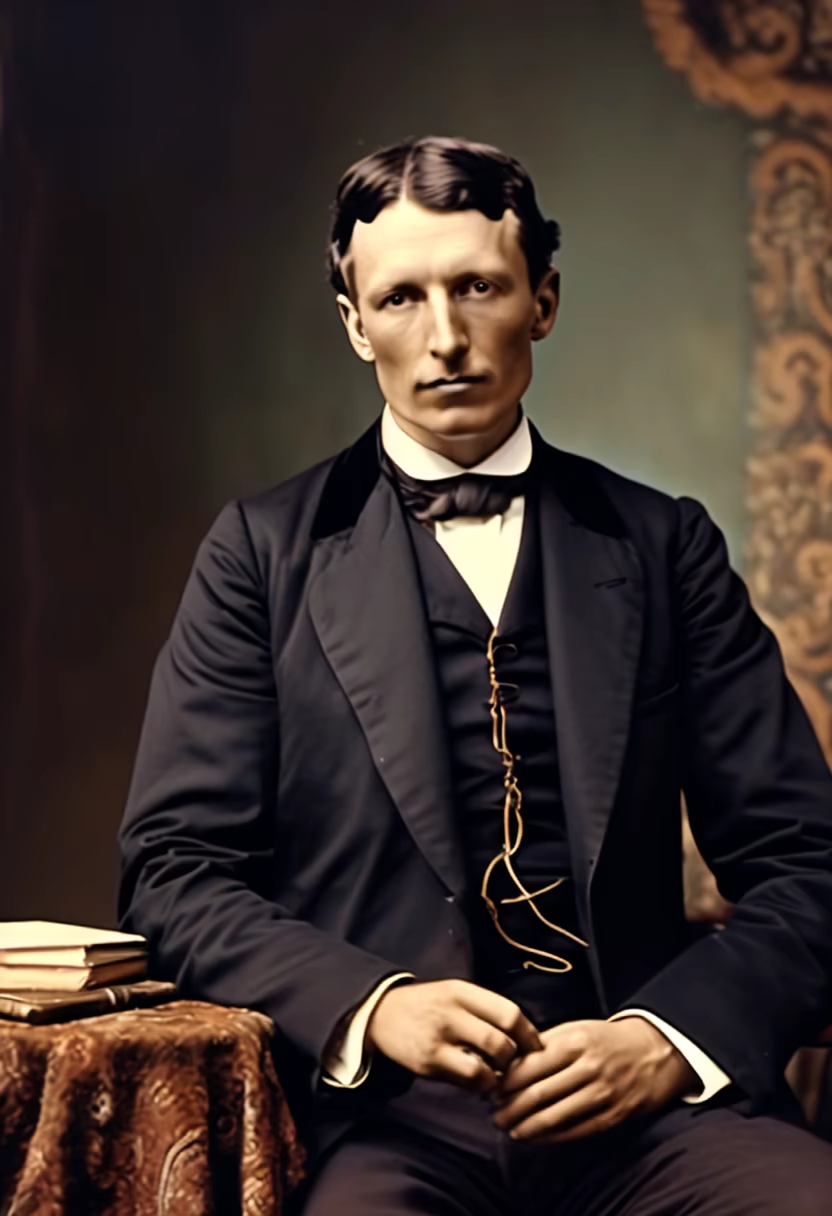
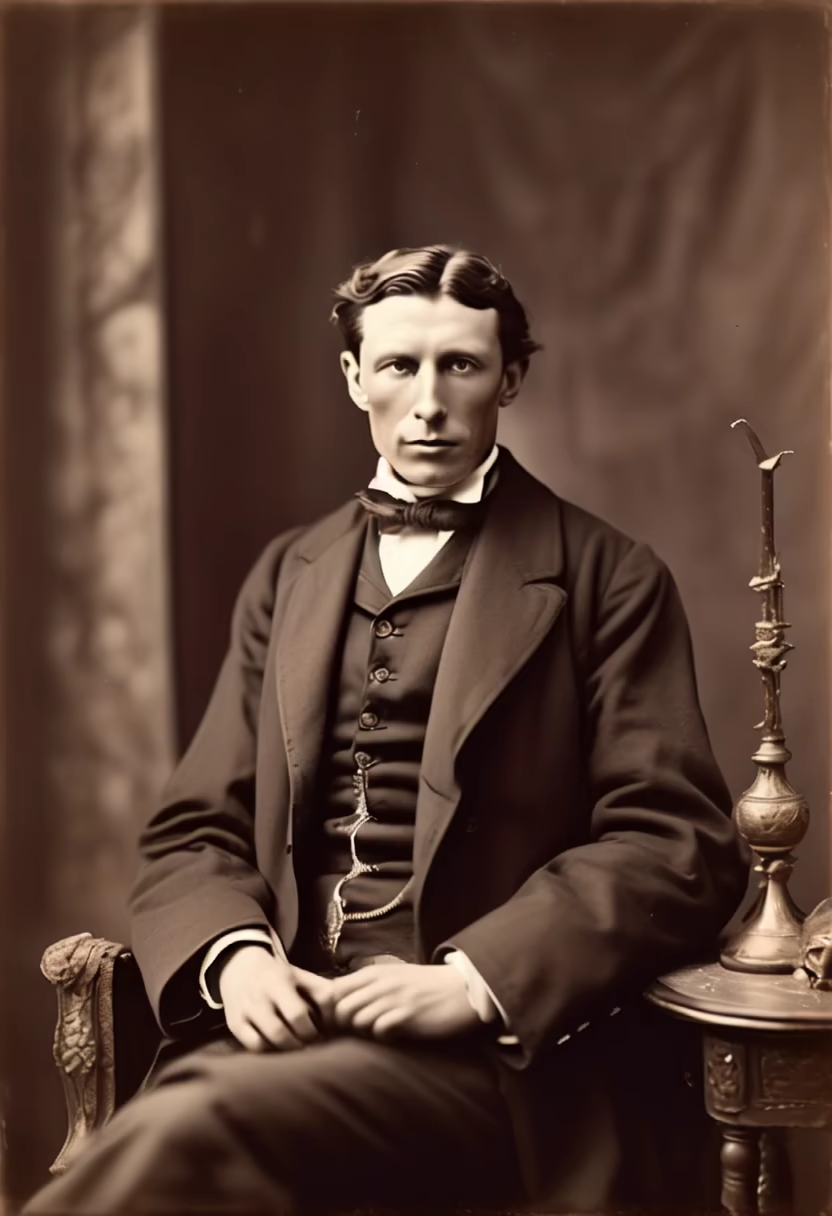


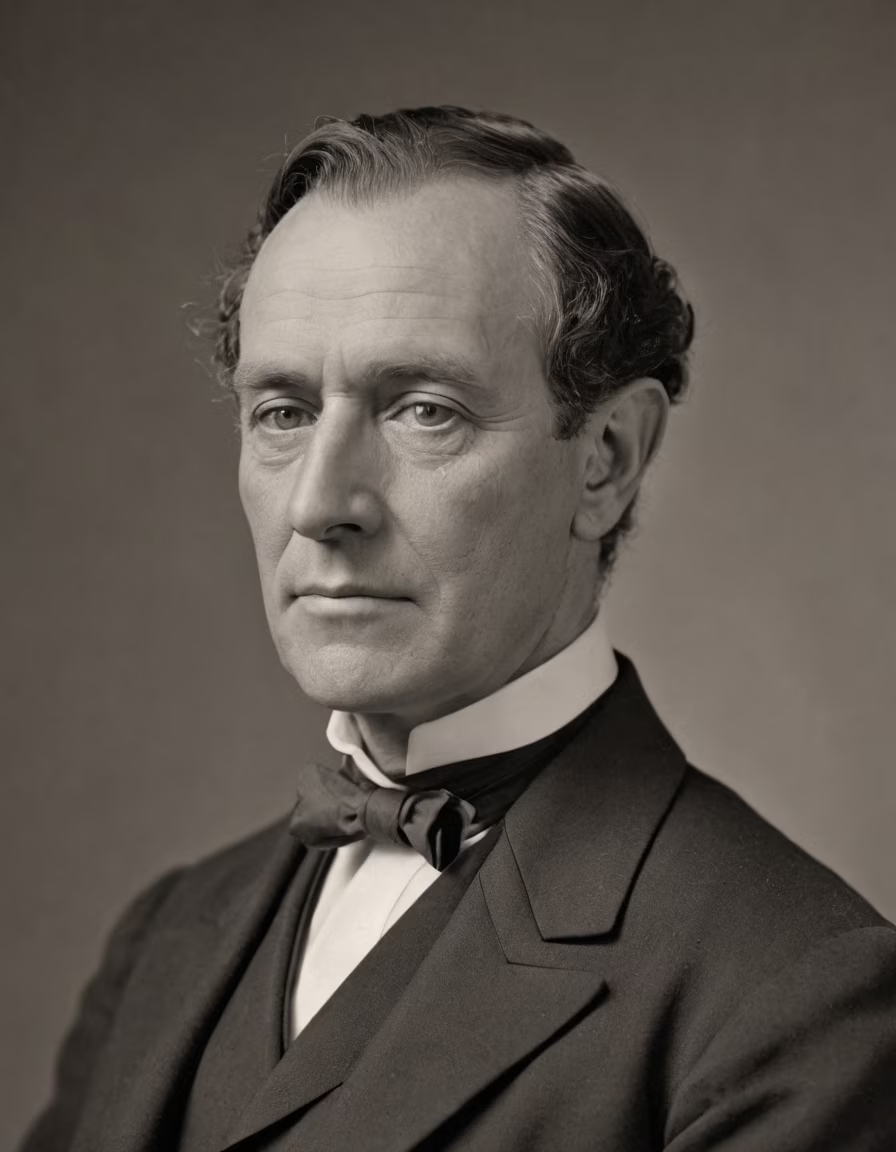

Prompt: Leonard Warren-Hopkins is a mid-19th century English physician and researcher he wears elegant and refined clothes, typical of the late 1800s English with the influence of Italian fashion, with symbols that recall being a doctor and a scientist, on his finger he wears a ring with a lightning bolt, symbol of his Masonic lodge Leonard's meticulous observation of the human body showcases his scientific passion. His intellectual curiosity and pursuit of knowledge lead him to explore the boundaries of medicine, often challenging social and moral norms. References to historical figures such as Galvani, Vesalius, Descartes and Renaissance scholars add depth to Leonardo's character. His alignment with medical pioneers reflects his ambition and admiration for those who pushed the boundaries of knowledge. Leonard's internal struggles, especially regarding his standing in the medical community and his perceived lack of recognition, add a layer of complexity. His acceptance of Lord Scarborough's offer and subsequent events contribute to the evolution of his identity. Leonard's involvement in the Masonic lodge of the Order of the Lightning is an intriguing element. The Lazarus Project and Leonard's experiments with electricity on the human body introduce a fascinating plot point. The collaboration with Tesla and the quest to resurrect the dead creates a sense of suspense and anticipation. Leonard's feelings of envy and frustration within the medical community, his interactions with famous people, and the competition for recognition provide opportunities for conflict and character development. The transformation of Villa Avogadro, inherited by Lord Scarborough into a nursing home and experimental space introduces a change of setting. Interactions with staff, the involvement of Florence Nightingale and the integration of new practices create a dynamic environment. Leonard's collaboration with Lady Violet Scarborough and experimentation with laudanum open doors to the exploration of darker themes. The reference to Lady Johanna McEwan as a \"Lamia\" with healing abilities introduces a supernatural element. Exploring how those elements intersect with Leonard's scientific research can add a layer of mystery. Leonard's hope to inspire Arthur Conan Doyle and his regret at not convincing him to work together can be an intriguing subplot. This can be woven into the narrative, exploring how Leonard becomes an unintentional muse for literary works. Personal relationships and morality: Leonard's personal relationships, especially with those he experiments on, call morality into question. You can explore his internal ethical struggles, the impact on his psyche, and the reactions of those around him.
Style: 3D Model


Prompt: Simone Rossellini, a distinguished figure in the shadowy world of the Giovanni Clan, bears the weight of his centuries with an air of timeless authority. Born in the heart of Rome during the 19th century, his journey through the ecclesiastical hierarchies of the Jesuits has left an indelible mark on his demeanor. His features carry the echoes of a noble past, with sharp, penetrating eyes that have witnessed the passage of ages. His skin, pallid and untouched by the sun's rays, reflects the unyielding nature of his undead existence. A well-groomed beard frames his face, accentuating the regal air that surrounds him. Simone is known for his unique combination of True Faith and the Power of Mortis, a potent blend that sets him apart even among his fellow clan members. His aura exudes a sense of otherworldly command, as if he has harnessed the very forces of the afterlife to serve his bidding. Draped in garments that blend the styles of a bygone era with the modern trappings of power, Simone carries himself with a grace that belies his vampiric nature. A silvered cross, a relic from his mortal days within the Jesuit order, hangs prominently around his neck, a symbol of the duality he embodies. In his retinue, Simone is surrounded by his offspring, each bearing the Giovanni mark of privilege and ambition. His faithful ghouls and spectral allies, drawn from the depths of the shadow, form a protective circle around him, their loyalty eternally bound to their venerable Elder. Simone Rossellini, a name whispered with a mix of reverence and trepidation in the hidden corridors of the undead world, stands as a testament to the enduring power of the Giovanni Clan.
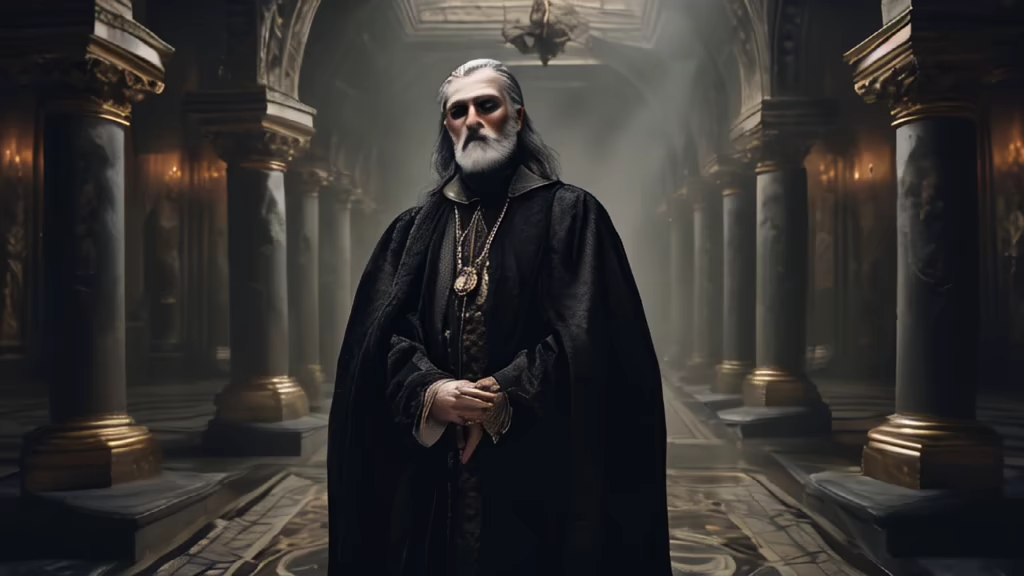

Prompt: Yoru From Valorant video game ,shirtless, light blue streaks on hair infront,on a Triumph motorbike parked in Shibuya, neon lights at night time, grunge aesthetic
Style: Digital Art




Prompt: Evening translucent dress colorful low angle, intricate detailing, hyperrealistic textures, (three views, front, side, back) ((Full body view portrait)) very dark black background a girl showing back , neon light glowing tattoo on her back Water flower invisibility, glow, 8k, stec
Style: Digital Art






Prompt: Jean Francois Michel, today known as Alexander de Camondo, lives his life in a gripping journey through the layers of society. Born very poor, he is now heir to one of the most important banks in France. He wears late 19th century Italian high fashion clothes, with symbols that remind everyone that he is Jewish such as the kippāh or the Talled. He decided to invest in the Opera Populair theater in Paris.


Prompt: Jean Francois Michel, today known as Alexander de Camondo, lives his life in a gripping journey through the layers of society. Born very poor, he is now heir to one of the most important banks in France. He wears late 19th century Italian high fashion clothes, with symbols that remind everyone that he is Jewish such as the kippāh or the Talled. He decided to invest in the Opera Populair theater in Paris.
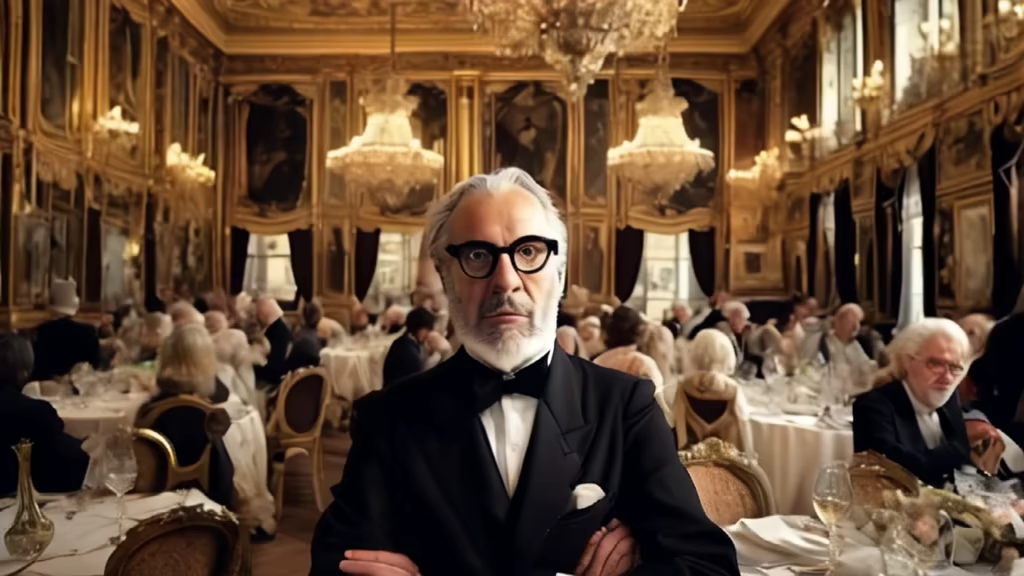
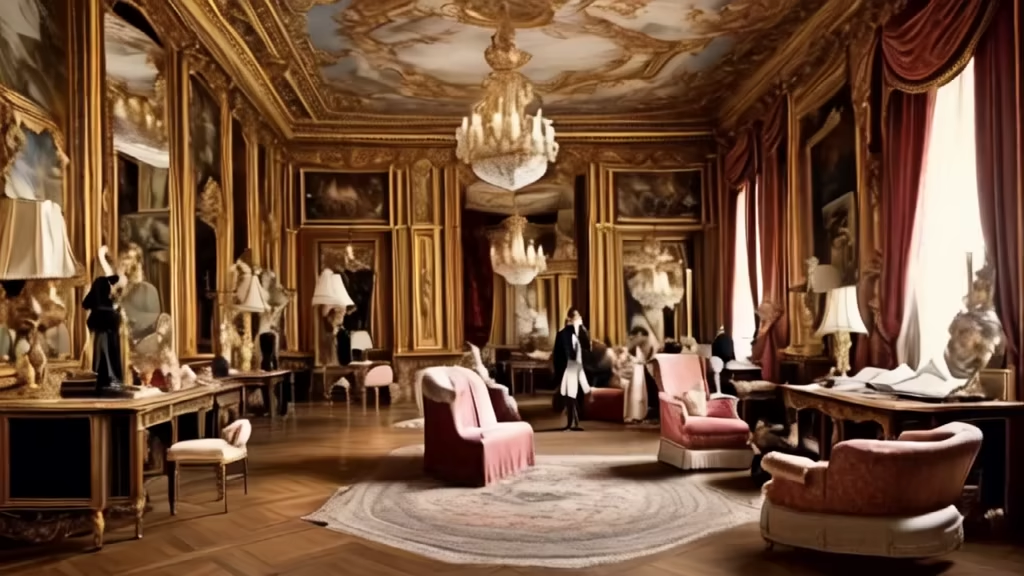
Prompt: The determined quality by which empiricism wanted to define sensation is an object, not an element of consciousness, and is the late objective of a scientific consciousness.




Prompt: The determined quality by which empiricism wanted to define sensation is an object, not an element of consciousness, and is the late objective of a scientific consciousness.




Prompt: The determined quality by which empiricism wanted to define sensation is an object, not an element of consciousness, and is the late objective of a scientific consciousness.


Prompt: Intimations of our transience become more insistent – they would, wouldn’t they? – in Through the Looking-Glass, the sequel Carroll published in December 1871. The prefatory poem to this winter narrative has a distinctly melancholy tone, spelling out the exact cause for such a change in mood: “We are but older children, dear, / who fret to find our bedtime near.”


Prompt: Craft a polished image of a distinguished Ph.D. Dr. exuding expertise, confidently presenting a well-groomed appearance with a side-parted hairstyle and a well-kept beard. Place the individual against a background that reflects stability and diffusion, perhaps in an academic setting or one that subtly integrates scientific elements. Elevate the scholarly ambiance by incorporating books as part of the backdrop, symbolizing knowledge and continuous learning. Let the image convey a harmonious blend of professionalism, intellect, and a commitment to excellence. The Ph.D. Dr. stands as a beacon of wisdom, surrounded by the wealth of knowledge represented by the books in the background


Prompt: Lord Ryckard Tyrell is aware of his prestigious position as Lady Olenna's son and holder of the Tyrell Seal. Chairing the Council of Thorns and establishing an alliance with the Martells indicate his leadership role in Summerhall politics. Despite his role as commander and decision-maker, Ryckard occasionally shows a desire to return to battle and hear the echoes of his voice on the field. This reflects a nostalgia for the warrior exploits of the past and frustration with his inability to actively participate in battles. His bond with loyal warrior Joshew Flowers, who saved him in battle, adds an element of gratitude and loyalty to Lord Ryckard's story. Lord Ryckard's disappointment in his children is palpable. Luthor's choice for the Summerhall wedding is dictated by the need to find the \"least crooked branch\". The lack of respect and insubordination of his children are sources of worry for Ryckard, even though he sincerely loves them. Characteristics The description of Lord Ryckard as a proud, determined and educated person adds depth to his character. His worldview and his philosophy on his social position contribute to his characterization. Loyalty to the Religion of the Seven: The mention of Lord Ryckard's devout adherence to the cult of the Seven adds an element of morality and tradition to his personality. Lord Ryckard's position as a noble and his wealth are important in his perception of himself and his interaction with other nobles. This could influence the social and political dynamics of the story. Reflection on the role of the nobles and their duty to lead the plebeians indicates a traditional perspective on nobility and power in Westeros society.




Prompt: Count François D'Armagnac, \"The noble adventurer\", . François D'Armagnac's early hardships, adoption, and desire for acceptance provide a rich backdrop to his character. As governor of Saint Domingue, François faces challenges and surprises in the Caribbean that differ from his expectations. François's sharp mind and curiosity, honed through studies in politics, humanities and Caribbean culture, set him apart. The discovery of a million pesos in Spanish doubloons and François's decision to hide them and convert them into ingots create a suspenseful subplot. His involvement in the expedition to find the Spanish treasure adds tension, especially due to the need to hide his actions. Exploring his emotional journey and how it influences his decisions adds a human element to the character. François's decision to join the expedition led by R.L. Wakefield and offering his ship, The Grace, demonstrates a blend of strategic thinking and a desire to control his involvement. The conflict with the governor of Bermuda, R.L. Wakefield, and efforts to hide involvement in the Spanish treasure expedition add layers of intrigue. Political Intrigues and Economic Ventures: The creation of \"Liberty Town\" and the focus on free trade provide opportunities for political intrigue and economic ventures. The Count's proposal to the Sorbonne for a branch in Santo Domingo adds an intellectual and cultural dimension to the story. The Count's interest in local culture, traditions and alternative medicines, particularly against the backdrop of Bari's San Nicola Hospital, can be further explored. \"Liberty Town\" is a new idea of revolutionary community for the era where Europeans and Natives live together in peace and freedom without slavery. The mention of the Dutch banker H. Eering and his role in creating an office for the bank adds a diplomatic dimension. the Count's bathing in the Spanish doubloons reflects an emotional connection to his wealth. The Count's reflections on his past and expressions of gratitude towards his uncle add a personal touch to the narrative. Consider incorporating more moments of introspection and personal growth as the Count grapples with his journey and responsibilities. It uses the rich historical and cultural context of the Caribbean in the 18th century. It incorporates details about local customs, traditions, and social fabric to immerse readers in the time and place. The mysterious J. D. Conrad and the hidden key to interpreting the map presents an intriguing subplot.




Prompt: Lord Ryckard Tyrell is aware of his prestigious position as the son of Lady Olenna and holder of the Tyrell Seal, a golden rose on green. Chairing the Council of Thorns and establishing an alliance with the Martells indicate his leadership role in Summerhall politics. Despite his role as commander and decision-maker, Ryckard occasionally shows a desire to return to battle and hear the echoes of his voice on the field. Lord Ryckard's disappointment in his children is palpable. Luthor's choice for the Summerhall wedding is dictated by the need to find the \"least crooked branch\". The lack of respect and insubordination of his children are sources of worry for Ryckard, even though he sincerely loves them. Characteristics The description of Lord Ryckard as a proud, determined and educated person adds depth to his character. His worldview and his philosophy on his social position contribute to his characterization The mention of Lord Ryckard's devout adherence to the cult of the Seven adds an element of morality and tradition to his personality. Lord Ryckard's position as a noble and his wealth are important in his perception of himself and his interaction with other nobles. This could influence the social and political dynamics of the story. Reflection on the role of the nobles and their duty to lead the plebeians indicates a traditional perspective on nobility and power in Westeros society.
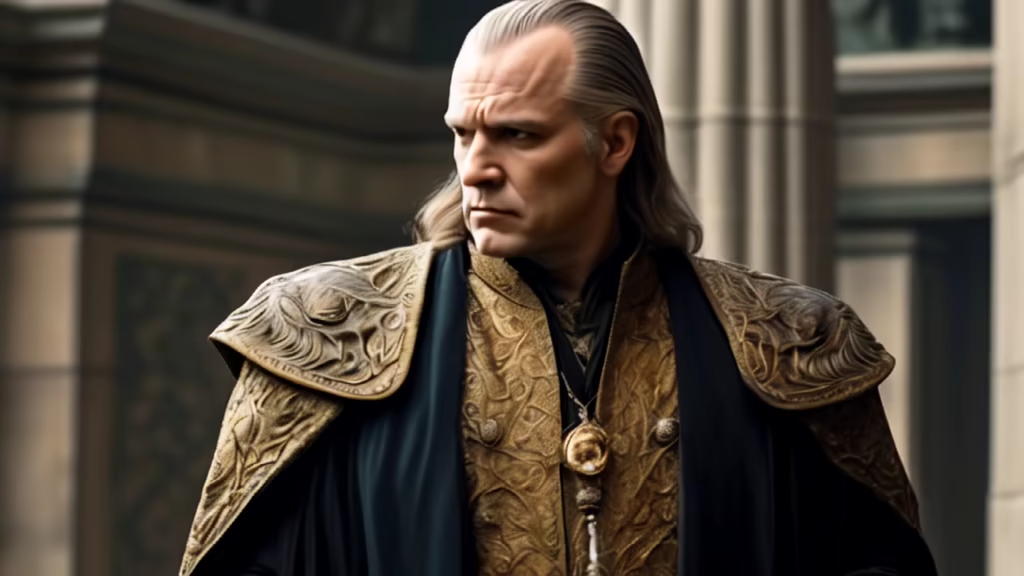
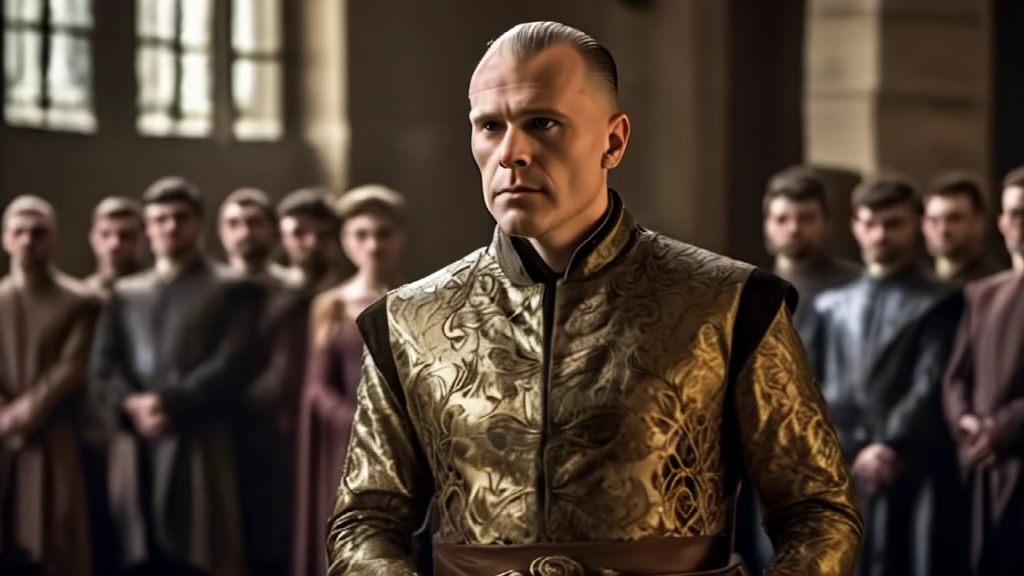
Prompt: Lord Ryckard Tyrell is aware of his prestigious position as the son of Lady Olenna and holder of the Tyrell Seal, a golden rose on green. Chairing the Council of Thorns and establishing an alliance with the Martells indicate his leadership role in Summerhall politics. Despite his role as commander and decision-maker, Ryckard occasionally shows a desire to return to battle and hear the echoes of his voice on the field. This reflects a nostalgia for the warrior exploits of the past and frustration with his inability to actively participate in battles. His bond with loyal warrior Joshew Flowers, who saved him in battle, adds an element of gratitude and loyalty to Lord Ryckard's story. Lord Ryckard's disappointment in his children is palpable. Luthor's choice for the Summerhall wedding is dictated by the need to find the \"least crooked branch\". The lack of respect and insubordination of his children are sources of worry for Ryckard, even though he sincerely loves them. Characteristics The description of Lord Ryckard as a proud, determined and educated person adds depth to his character. His worldview and his philosophy on his social position contribute to his characterization. Loyalty to the Religion of the Seven: The mention of Lord Ryckard's devout adherence to the cult of the Seven adds an element of morality and tradition to his personality. Lord Ryckard's position as a noble and his wealth are important in his perception of himself and his interaction with other nobles. This could influence the social and political dynamics of the story. Reflection on the role of the nobles and their duty to lead the plebeians indicates a traditional perspective on nobility and power in Westeros society.






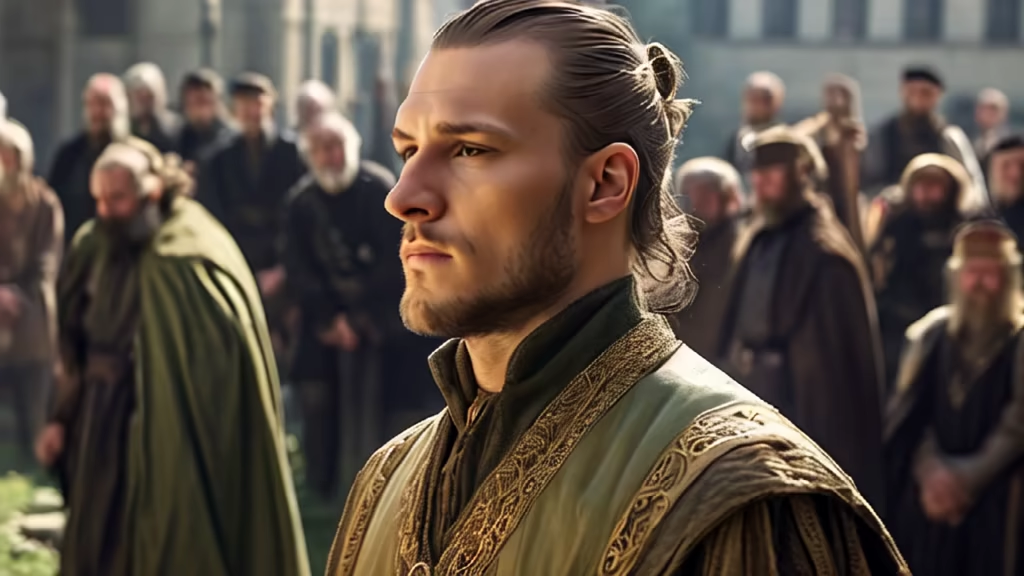
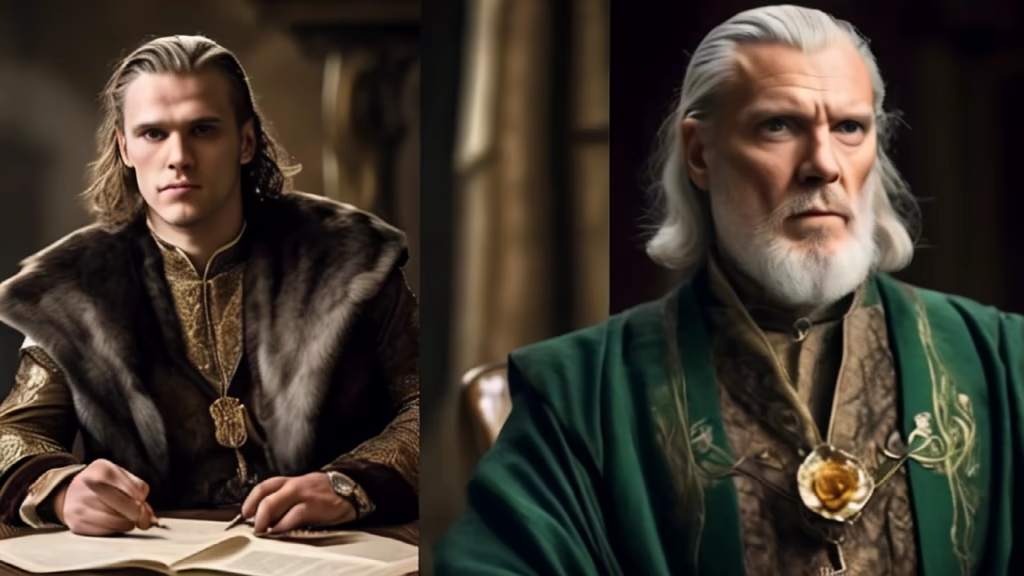




Prompt: Samuel Livingstone is the caretaker and old mayor of Gravesand. Always ready to go out of his way for the city and its citizens and for this reason respected by everyone. He was elected mayor many years ago and for many years he has always been firmly at the helm of local political power, solving the problems of both the citizens and the nobles of the country. But years have passed and Samuel is now called ''old'' Sam. Time, inexorably, settled on her back, curving it and her hair became as white as snow. Now he no longer has the strength to carry out his mission and has given way. But still his eye trained by years of experience watches over the well-being of the city. Samuel's friend is Thomas Walker with whom for years he shared the burden of carrying on the management of the community. He thinks the new mayor Gerard Prescott is a good person, but not yet in tune with the country. Lady Mary Livingstone is Samuel's wife who he considers a special woman and his strength. Josh Clay is the son Samuel never had Samuel was born and lives in Gravesand, in 1873, an ancient town in Kent, famous for its its Fair, organized every year on the day of the Spring Equinox. The Fair is underway of the celebrations in honor of Sant'Anna, the protector of expectant mothers or eager to have children. In addition to market, specializing in antique objects or exotic, the celebrants will be able to witness the performances by actors and acrobats. TO cause of a serious outbreak disease that decimated the population local, last year the citizens have had to give up the celebrations their Santa. To make up for it, the celebrations this year they will be even more sumptuous and Gravesand will have the honor of hosting the important Scientific Exhibition of Royal Society right during the Fair. The Fair celebrations and the Scientific Exhibition are important events in the life of Gravesand Gravesand's backstory hides a secret. The life of the entire Gravesand community has been affected and changed by the disease that arose last year. Samuel's story has a mixture of melancholy and hope, as he remembers his wife and contemplates the changes in the city. The old mayor's wife has left her circus life to live with him, but has mixed feelings when her gypsy companions arrive in town for the fair. Thomas Walker sits like every evening at \"The Fishermans\" table awaiting the arrival of his friend Samuel to discuss the events of the city.






Prompt: Samuel Livingstone is the caretaker and old mayor of Gravesand. Always ready to go out of his way for the city and its citizens and for this reason respected by everyone. He was elected mayor many years ago and for many years he has always been firmly at the helm of local political power, solving the problems of both the citizens and the nobles of the country. But years have passed and Samuel is now called ''old'' Sam. Time, inexorably, settled on her back, curving it and her hair became as white as snow. Now he no longer has the strength to carry out his mission and has given way. But still his eye trained by years of experience watches over the well-being of the city. Samuel's friend is Thomas Walker with whom for years he shared the burden of carrying on the management of the community. He thinks the new mayor Gerard Prescott is a good person, but not yet in tune with the country. Lady Mary Livingstone is Samuel's wife who he considers a special woman and his strength. Josh Clay is the son Samuel never had Samuel was born and lives in Gravesand, in 1873, an ancient town in Kent, famous for its its Fair, organized every year on the day of the Spring Equinox. The Fair is underway of the celebrations in honor of Sant'Anna, the protector of expectant mothers or eager to have children. In addition to market, specializing in antique objects or exotic, the celebrants will be able to witness the performances by actors and acrobats. TO cause of a serious outbreak disease that decimated the population local, last year the citizens have had to give up the celebrations their Santa. To make up for it, the celebrations this year they will be even more sumptuous and Gravesand will have the honor of hosting the important Scientific Exhibition of Royal Society right during the Fair. The Fair celebrations and the Scientific Exhibition are important events in the life of Gravesand Gravesand's backstory hides a secret. The life of the entire Gravesand community has been affected and changed by the disease that arose last year. Samuel's story has a mixture of melancholy and hope, as he remembers his wife and contemplates the changes in the city. The old mayor's wife has left her circus life to live with him, but has mixed feelings when her gypsy companions arrive in town for the fair. Thomas Walker sits like every evening at \"The Fishermans\" table awaiting the arrival of his friend Samuel to discuss the events of the city.
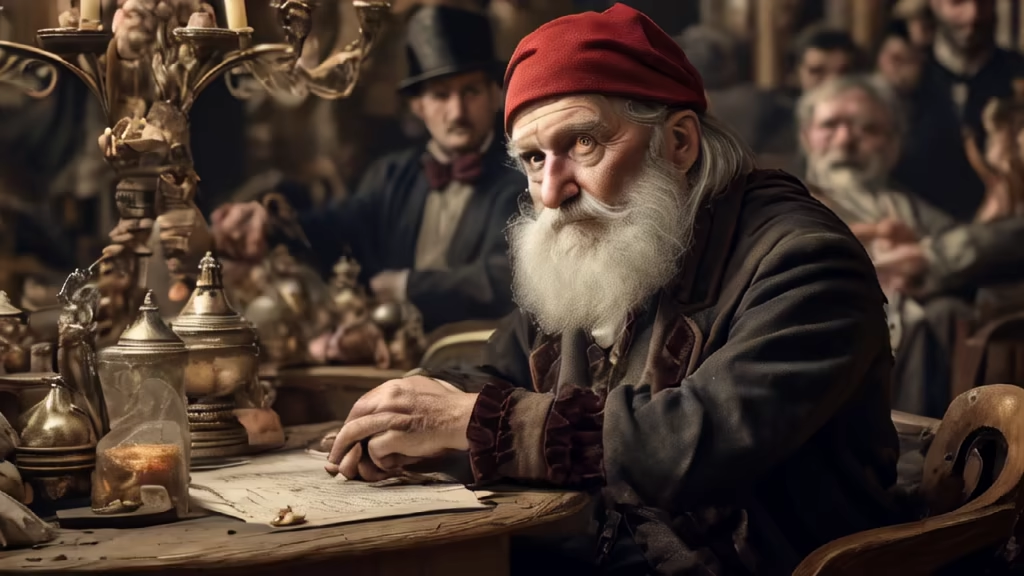
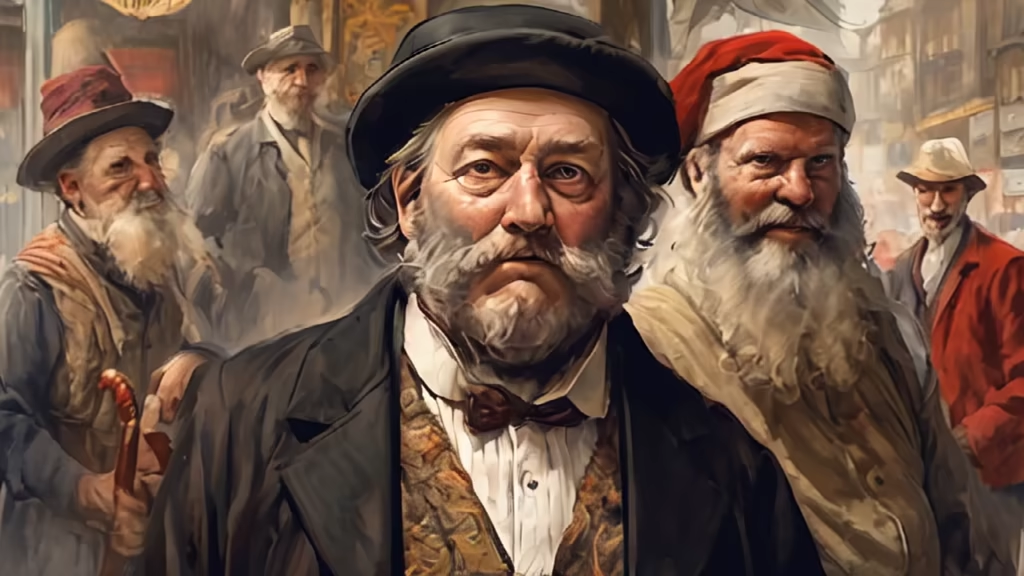
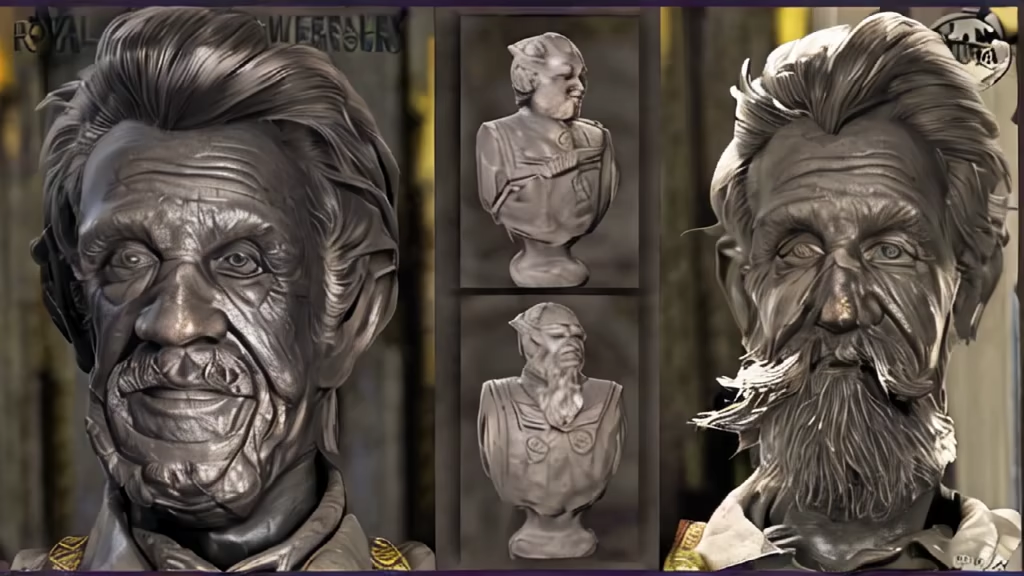
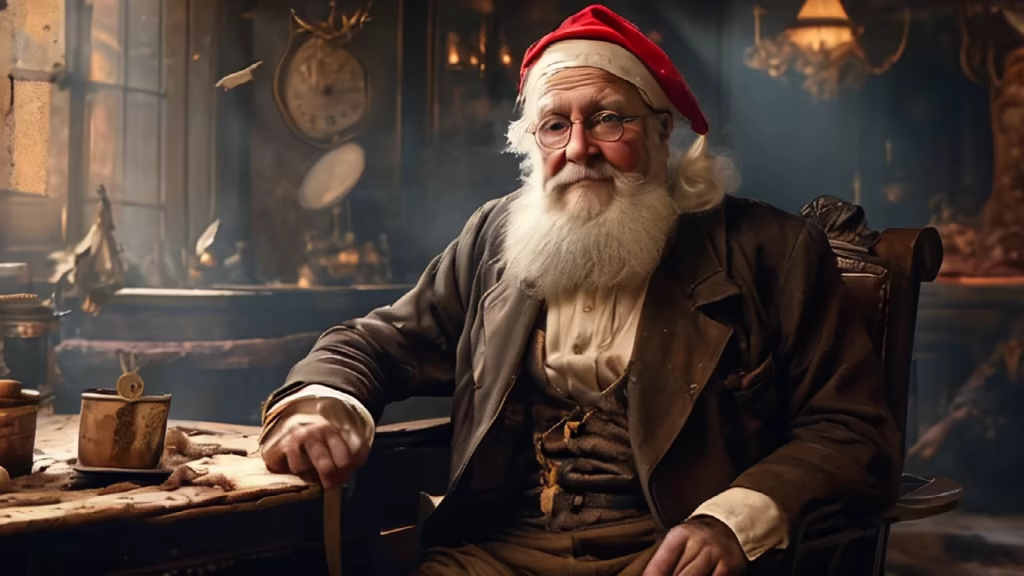
Prompt: Samuel Livingstone is the caretaker and old mayor of Gravesand. Always ready to go out of his way for the city and its citizens and for this reason respected by everyone. He was elected mayor many years ago and for many years he has always been firmly at the helm of local political power, solving the problems of both the citizens and the nobles of the country. But years have passed and Samuel is now called ''old'' Sam. Time, inexorably, settled on her back, curving it and her hair became as white as snow. Now he no longer has the strength to carry out his mission and has given way. But still his eye trained by years of experience watches over the well-being of the city. Samuel's friend is Thomas Walker with whom for years he shared the burden of carrying on the management of the community. He thinks the new mayor Gerard Prescott is a good person, but not yet in tune with the country. Lady Mary Livingstone is Samuel's wife who he considers a special woman and his strength. Josh Clay is the son Samuel never had Samuel was born and lives in Gravesand, in 1873, an ancient town in Kent, famous for its its Fair, organized every year on the day of the Spring Equinox. The Fair is underway of the celebrations in honor of Sant'Anna, the protector of expectant mothers or eager to have children. In addition to market, specializing in antique objects or exotic, the celebrants will be able to witness the performances by actors and acrobats. TO cause of a serious outbreak disease that decimated the population local, last year the citizens have had to give up the celebrations To make up for it, the celebrations this year they will be even more sumptuous and Gravesand will have the honor of hosting the important Scientific Exhibition of Royal Society right during the Fair. The Fair celebrations and the Scientific Exhibition are important events in the life of Gravesand Gravesand's backstory hides a secret. The life of the entire Gravesand community has been affected and changed by the disease that arose last year. Samuel's story has a mixture of melancholy and hope, as he remembers his wife and contemplates the changes in the city. The old mayor's wife has left her circus life to live with him, but has mixed feelings when her gypsy companions arrive in town for the fair. Thomas Walker sits like every evening at \"The Fishermans\" table awaiting the arrival of his friend Samuel to discuss the events of the city.
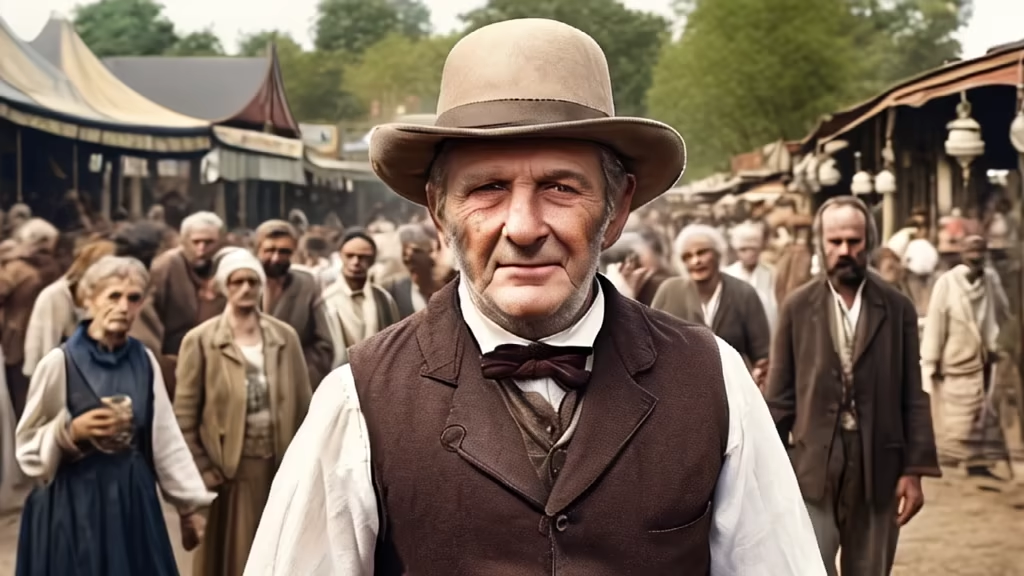

Prompt: Samuel Livingstone is the caretaker and old mayor of Gravesand. Always ready to go out of his way for the city and its citizens and for this reason respected by everyone. He was elected mayor many years ago and for many years he has always been firmly at the helm of local political power, solving the problems of both the citizens and the nobles of the country. But years have passed and Samuel is now called ''old'' Sam. Time, inexorably, settled on her back, curving it and her hair became as white as snow. Now he no longer has the strength to carry out his mission and has given way. But still his eye trained by years of experience watches over the well-being of the city.




Prompt: Alexander de Camondo, is a French banker and Italian nobleman, He wears elegant nineteenth-century clothes, with kippāh or the Talled












Prompt: Alexander de Camondo, is a French banker and Italian nobleman, He wears elegant nineteenth-century clothes, wearing kippāh and Talled
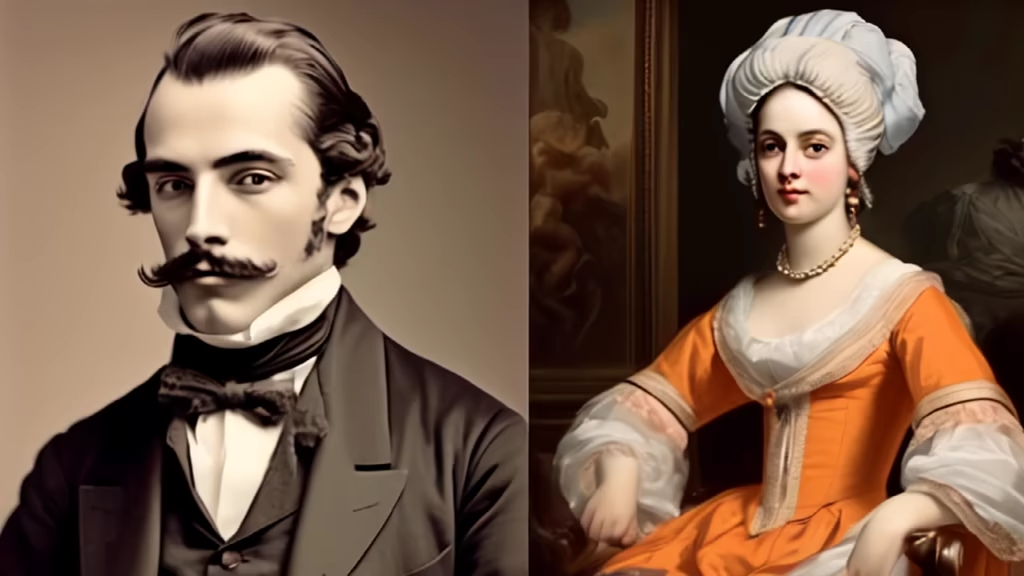
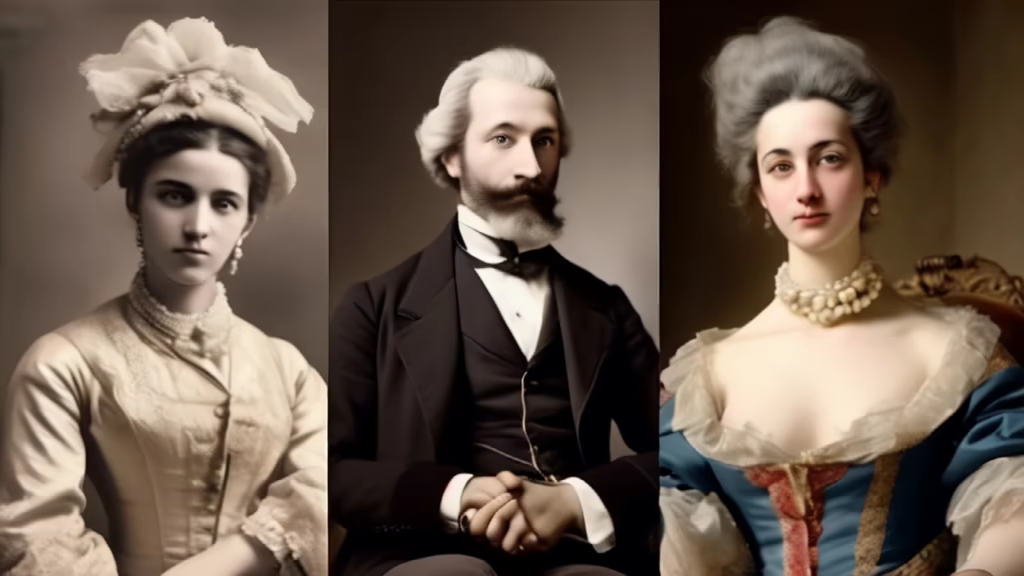
Prompt: The entirety was a flawless work of natural romantic surrealism, a feast for the eyes and fuel for the imagination. One could envision it captured through the visionary lens of some immortalized photographer, their imprints imbuing the scene with added layers of subtle symbolic meaning. Or perhaps illustrated in the watercolors of say, Gustave Moreau, with his penchant for mystical imagery. The enraptured observer may even imagine themselves as protagonist in a graphic fairy tale brought to life by the deft brushwork of Mingdong Chen or Dominique Alfonsi, unfolding amidst the glistening midnite coast.
Negative: nudity




Prompt: Rochford, Anne Boleyn's brother, graces the Tudor court with an air of sophistication and charm. Adorned in the noble attire of the era, Rochford carries himself with a mixture of regal poise and familial warmth.His gaze, sharp and discerning, navigates the courtly intrigues that surround the Boleyn family. The regal chamber, adorned with symbols of Tudor power, becomes a backdrop to Rochford's interactions, where political astuteness and familial ties intertwine. This portrayal captures Rochford as a figure of significance within the complex dynamics of the Tudor court.
Style: Cinematic


Prompt: Rochford, Anne Boleyn's brother, graces the Tudor court with an air of sophistication and charm. Adorned in the noble attire of the era, Rochford carries himself with a mixture of regal poise and familial warmth.His gaze, sharp and discerning, navigates the courtly intrigues that surround the Boleyn family. The regal chamber, adorned with symbols of Tudor power, becomes a backdrop to Rochford's interactions, where political astuteness and familial ties intertwine. This portrayal captures Rochford as a figure of significance within the complex dynamics of the Tudor court.
Style: Cinematic



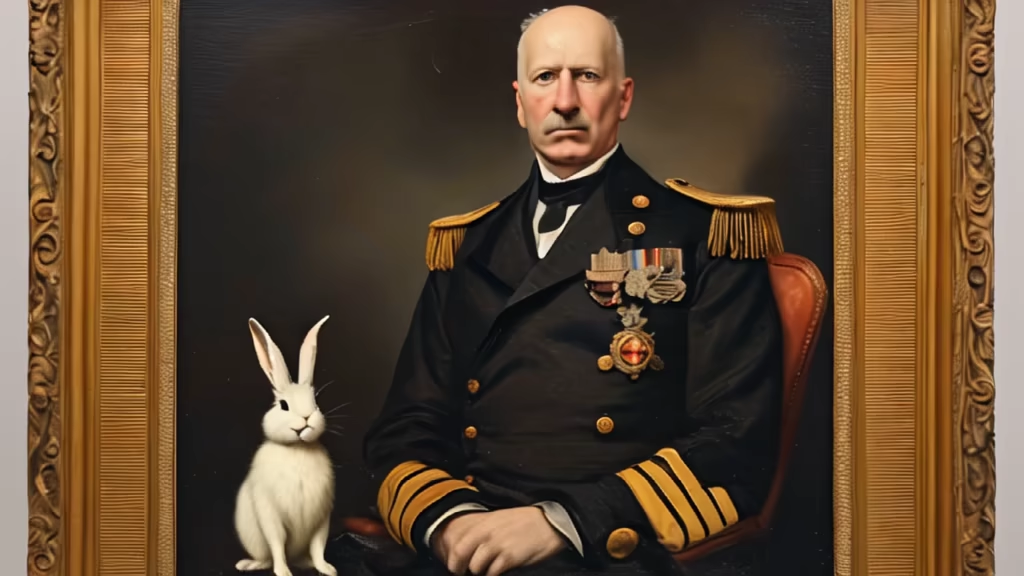
Prompt: Lord Ryckard Tyrell, member of one of the most noble and wealthy families participating in the Games of Throne is aware of his prestigious position as son of Lady Olenna and holder of the Tyrell Seal, a golden rose on a green background. Chairing the Council of Thorns and establishing an alliance with the Martells indicate his leadership role in Summerhall politics. Despite his role as commander and decision-maker, Ryckard occasionally shows a desire to return to battle and hear the echoes of his voice on the field. Lord Ryckard's disappointment in his children is palpable. Luthor's choice for the Summerhall wedding is dictated by the need to find the \"least crooked branch\". The lack of respect and insubordination of his children are sources of worry for Ryckard, even though he sincerely loves them. Characteristics The description of Lord Ryckard as a proud, determined and educated person adds depth to his character. His worldview and his philosophy on his social position contribute to his characterization The mention of Lord Ryckard's devout adherence to the cult of the Seven adds an element of morality and tradition to his personality.


